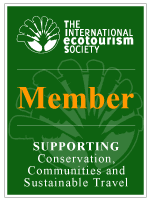New Paragraph
Japan Tours
Timeless Japan Tours
Day 1: Yokoso Tokyo!
Upon arrival at Tokyo Narita or Haneda International Airport, transfer by airport shuttle service to your hotel. Today will be tailored according to your flight schedule.
Overnight: Tokyo.
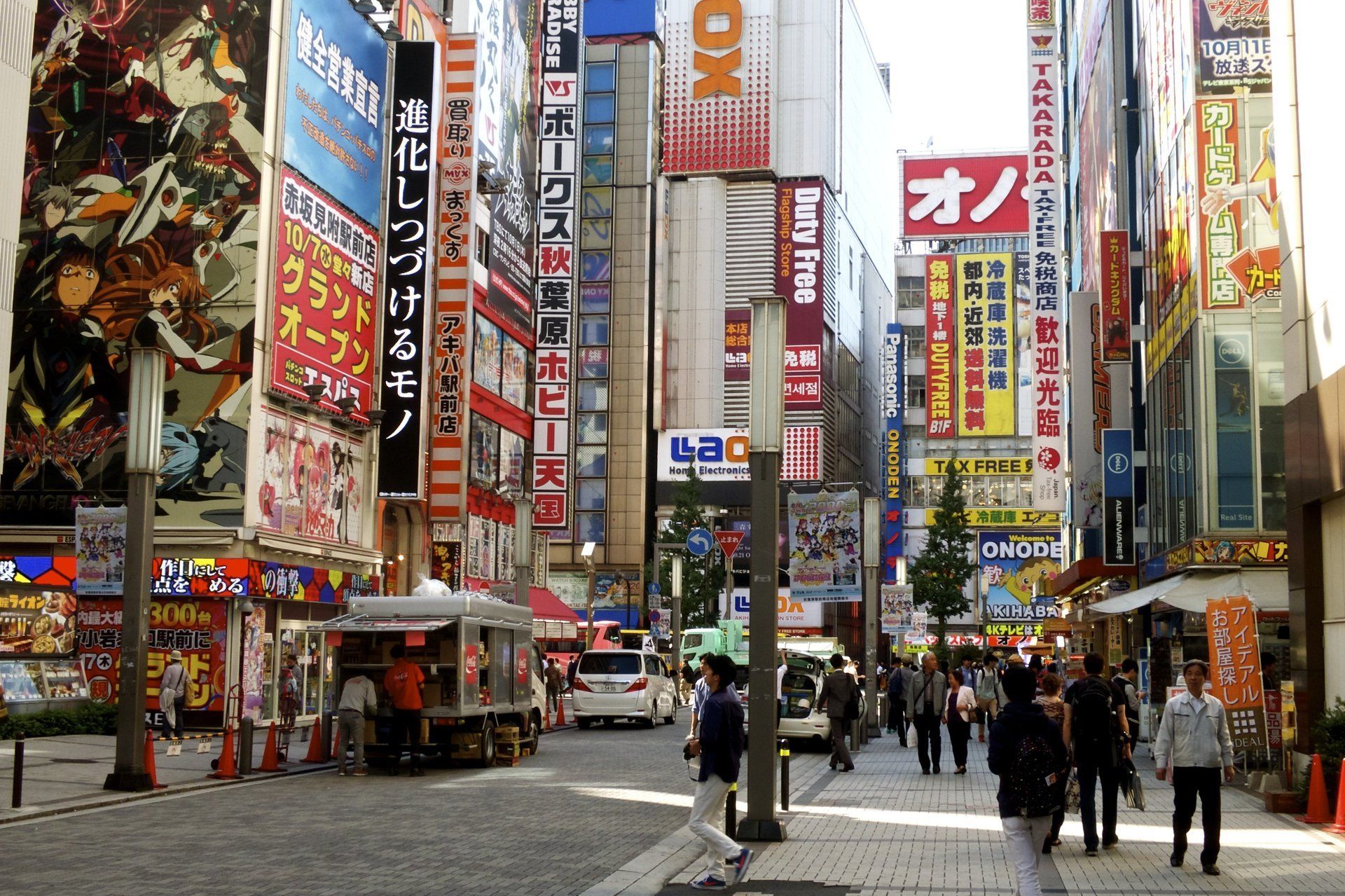
Day 2: Tokyo
Tokyo is a vibrant dynamic and modern city which has many sides to explore: Sensoji Temple and Mejii Shrine, remnants of the past; the Imperial Palace and Gardens; Akihabara Electric Town; Shibuya, home to the famously busy pedestrian crossing; Tokyo Skytree, the tallest building in Japan and its magnificent views of Tokyo, and on a clear day, Mt. Fuji; Harajuku, a trendy shopping area geared towards fashion conscious teens; futuristic architecture; and absorbing museums and galleries in Ueno Park.
Today is a full day tour of Tokyo based on your interests and what you would like to visit in Tokyo. You may want to catch a training session at a beya, or sumo stable. Or learn how to make sushi with a local and enjoy your creation for lunch. Maybe an art or architecture tour is more your style. There are many other options from flower arranging to drumming.
Overnight: Tokyo. (B)
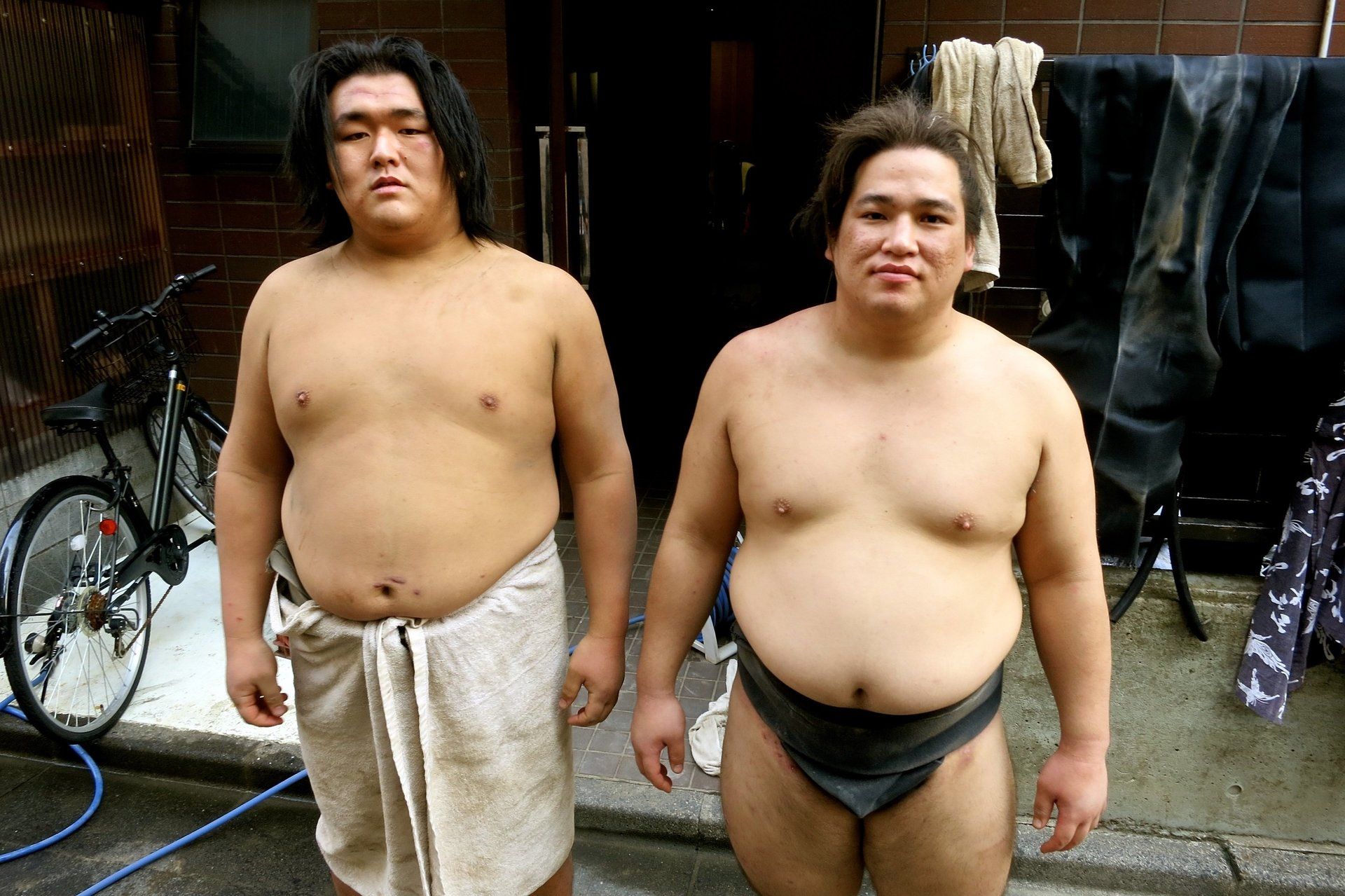
Day 3: Tokyo
A day to explore Tokyo independently or book a tour at an additional cost.
Overnight: Tokyo. (B)
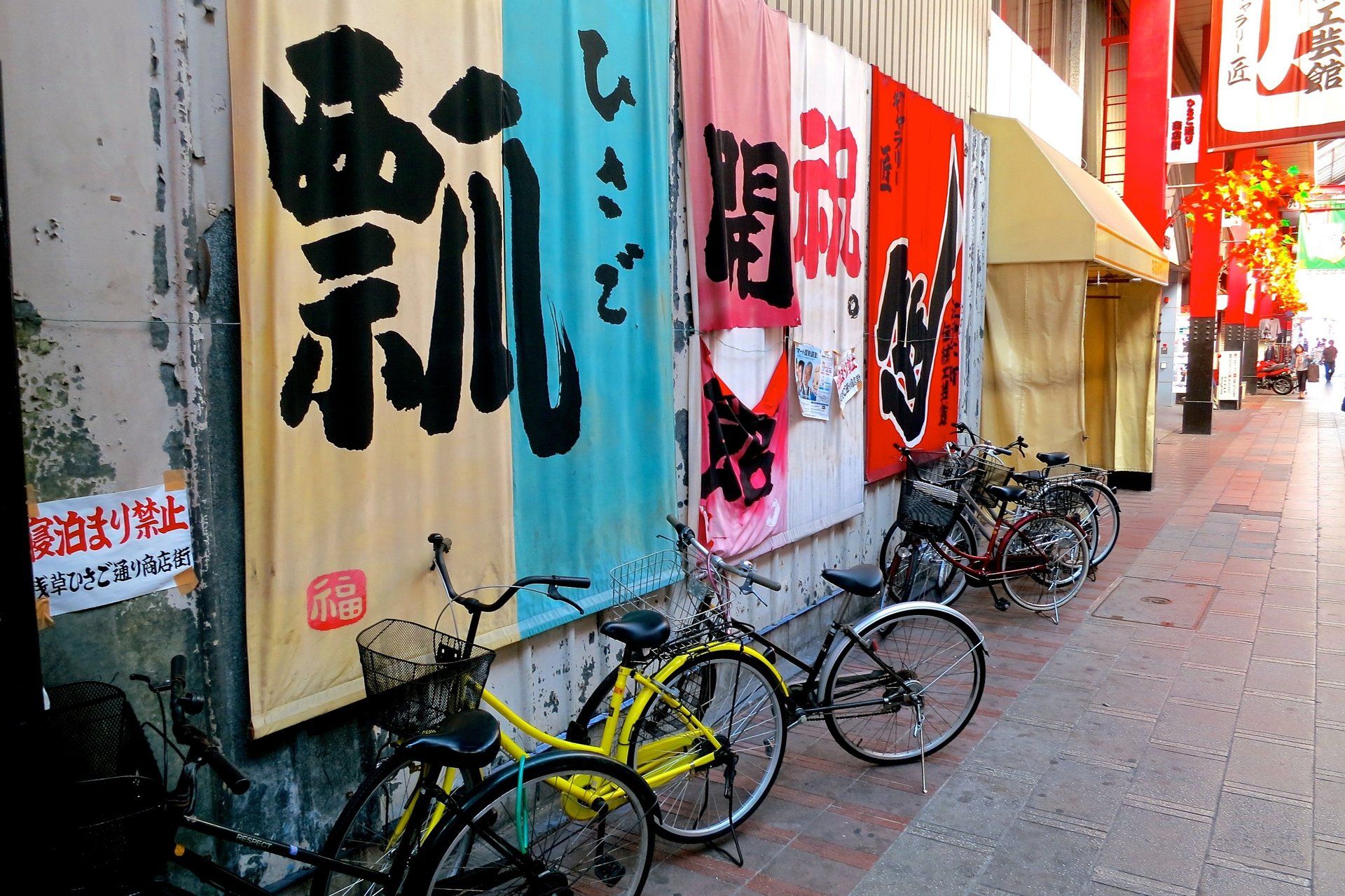
Day 4: Matsue
This morning depart by train for Matsue, known as the “City of Water”. The city is located by the Sea of Japan and famous for its beautiful sunsets over Lake Shinji. Matsue, a former feudal stronghold, has one of the twelve remaining original castles in Japan. It is also the adopted home of the Irish writer, Lafcadio Hearn, who was one of the first westerners to became a Japanese citizen. Matsue and the neighbouring countryside are surrounded by historical and cultural sites.
Overnight Matsue. (B)
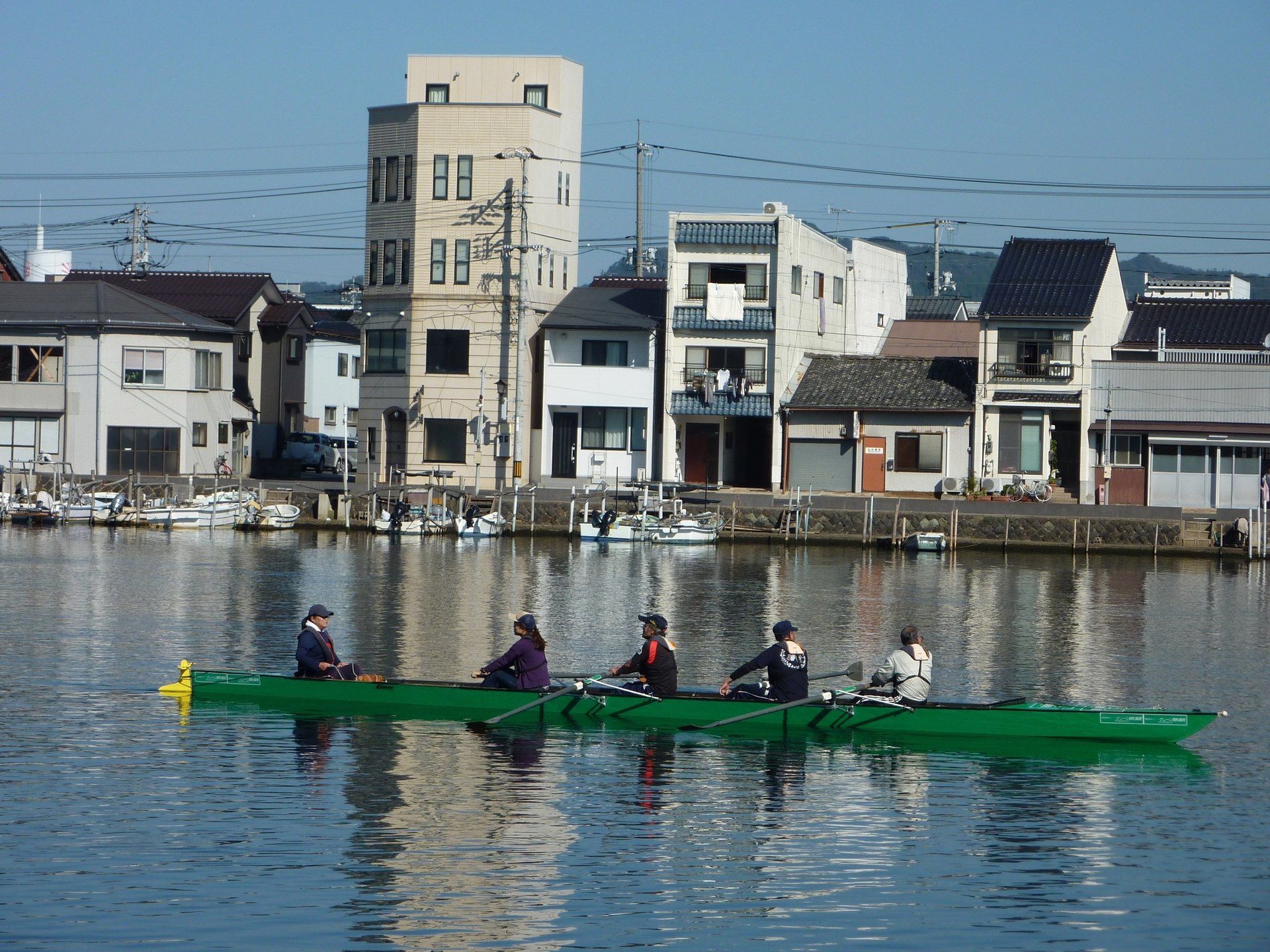
Day 5: Matsue
Today explore Matsue’s feudal pass. Visit Matsue Castle with its samurai weapons, armour, artworks and models of ancient and modern Matsue. Stroll Shiomi Nawate Street, a beautiful street lined with the castle moat, ancient pine trees and traditional Japanese houses. Many of Matsue’s major historical attractions are found on this street: Tanabe Art Museum, Lafcadio Hearn Residence & Museum, Meimei-An Teahouse, and Buke Yashiki, a former samurai residence.
Overnight Matsue.
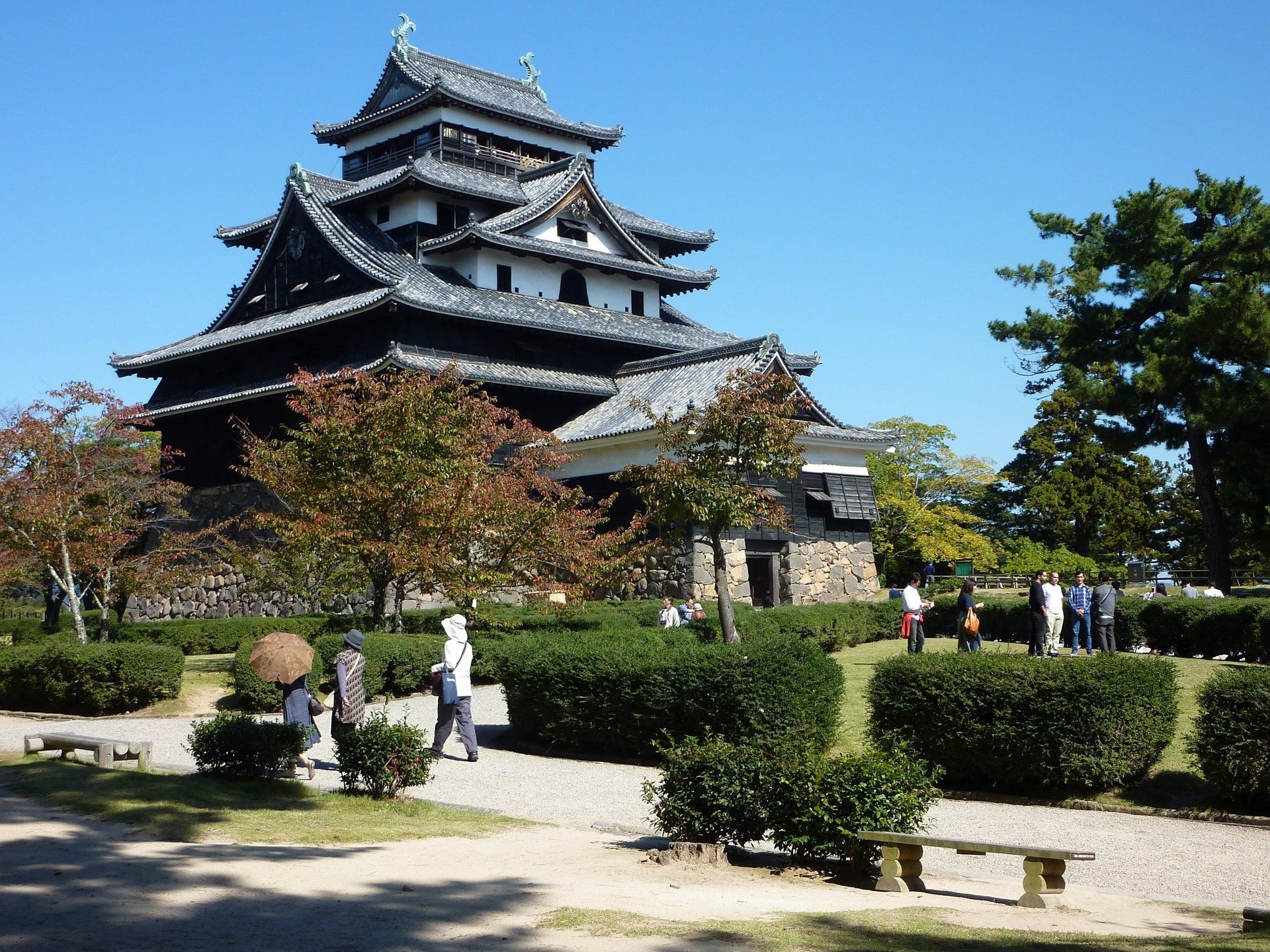
Day 6: Matsue: Gardens, Art And Temple
Today choose to visit either Adachi Museum of Art, one of Japan’s most beautiful landscape gardens or Izumo Taisha, one of Japan’s most important shrines.
Adachi Zenko, the founder of the Adachi Museum of Art, blended the lines between garden design and Japanese art to increase the understanding and appreciation of the two. The award-winning gardens can
only be seen behind glass from inside the museum…like a work of art. In addition to traditional Japanese ceramics, the founding fathers of modern Japanese paintings are well represented in the museum.
Izumo Taisha is one of Japan's most important shrines. Although there are no records of exactly when Izumo Taisha was built, it did exist in the early 700s and is considered the oldest shrine in Japan. Izumo used to be ruled by a powerful clan in pre-historic times, and the region plays a central role in Japan's creation mythology. The main deity enshrined at Izumo Taisha is Okuninushi no Okami, the creator of the land of Japan and the ruler of Izumo. He also became known as the deity of good relationships and marriage. Visitors consequently clap their hands four times during their prayers: twice for themselves and twice for their actual or desired partners.
Overnight Matsue. (B)

Day 7: Kinosaki Onsen
Take a morning train from Matsue to Kinosaki Onsen:
Around the 8th century hot springs were discovered in Kinosaki. Today it is a delightful onsen town for both Japanese and international visitors. In the evening visitors dressed in yukata and geta stroll from public bath to public bath.
Overnight Kinosaki Onsen. (B)

Credit: ©Toyooka City/©JNTO
Day 8: Kyoto
Take the train to Kyoto. You will have two full days to explore Kyoto.
Overnight Kyoto. (B)

Day 9: Kyoto
A day to explore Kyoto independently. Kyoto is considered the cultural heart of Japan and Kyoto is the best place to experience Japanese culture. There is an abundance of temples, gardens and geisha. Some suggestions include an easy stroll along the ‘Philosopher’s Path’ that connects Ginkaku-ji, the Temple of the Silver Pavilion and Nanzen-ji Temple. Or visit Kinkakuji temple, immortalised in Yukio Mishima’s novel “The Golden Pavilion”. Or visit the Zen garden of Ryoan-ji, celebrated for its complex design of 15 rocks, all of which can’t be seen at once from any angle.
Fushimi Inari Shinto Shrine is famous for its thousands of vermilion torii gates and network of trails through the wooded forest of the sacred Mount Inari. Foxes are thought to be Inari's messengers, resulting in many fox statues across the shrine grounds. This may be the most impressive sight in all of Kyoto.
Overnight Kyoto. (B)

Day 10: Kyoto
Today choose from either a half-day cycling tour or a half-day walking tour:
Cycling Tour: Kyoto’s mainly flat terrain makes cycling a great way to see the city. On this tour you will visit the very popular Kiyomizu Temple and the Yasui Kompira Shrine where locals come here to pray for good relationships or to break off a bad relationship. Cycle picturesque back streets of the Gion district home to geisha and traditional teahouses. Sample Japanese sweets and cycle beside the Takase-gawa River. End your tour at the Nijo Castle, a World Heritage Site and famous for its ‘nightingale flooring’.
Approximate Riding Distance: 15km
Walking Tour: On this walking tour you visit two World Heritage sites, Kiyomizu Temple and the Gion district. Kiyomizu Temple offers visitors a wonderful view of cherry and maple trees from it massive wooden terrace. Stroll along the Shirakawa Canal lined with willow and cherry trees, wander the cobblestone streets of the Gion district lined with traditional machiya merchant house and ochaya (teahouses). Visit the Yasui Kompira Shrine where Kyotoites come to pray for finding a good partner or breaking off from a bad one. This tour ends about 6 p.m. in the Gion district, a great place to spend the evening.
Approximate Walking Distance: 3.5km
Remainder of the day at your leisure.
Overnight Kyoto. (B)
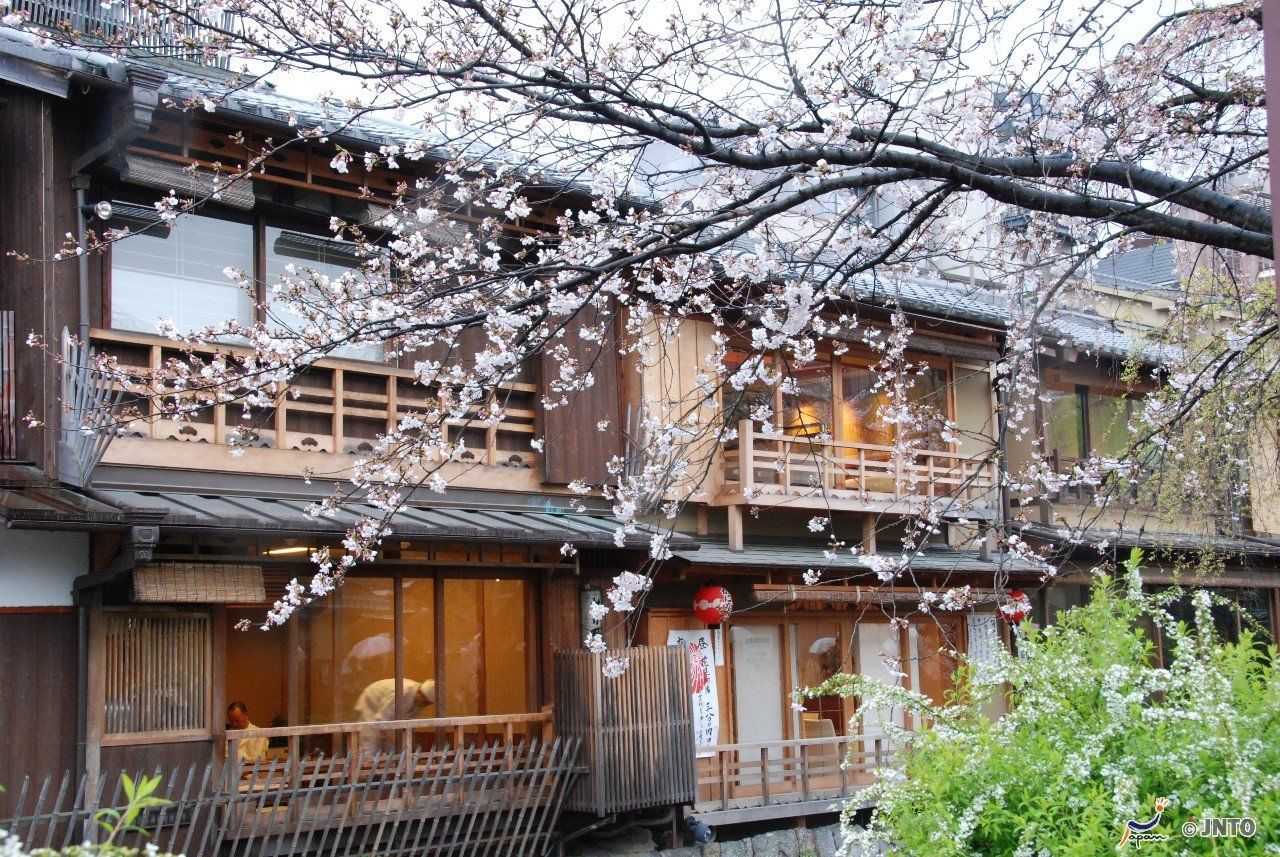
Credit: © Y.Shimizu/© JNTO
Day 11: Nakasendo Way: Kyoto – Tsumago
Today travel by train from Kyoto to Nakatsugawa where you board a bus for a short journey to Magome. Here you begin your self-directed walk along the Nakasendo Way. In feudal times people travelling between Kyoto and Tokyo would use the Nakasendo Way, the road through the central mountains, one of a network of ancient highways. Along the route travellers rested at inns in post-towns. The walking is mostly paved village paths and unpaved mountains trails, with some gentle ascents and descents. The hike passes through rural scenery and villages, including exquisitely-preserved post-towns.
From Magome walk over the pass to Tsumago, one of the best preserved Nakasendo post-towns.
Walking Distance/Time: 8.3km / about 3 hours Elevation Gain: 326m ascent / 430m descent
Overnight: Minshuku in Tsumago or O-Tsumago. (B,D)
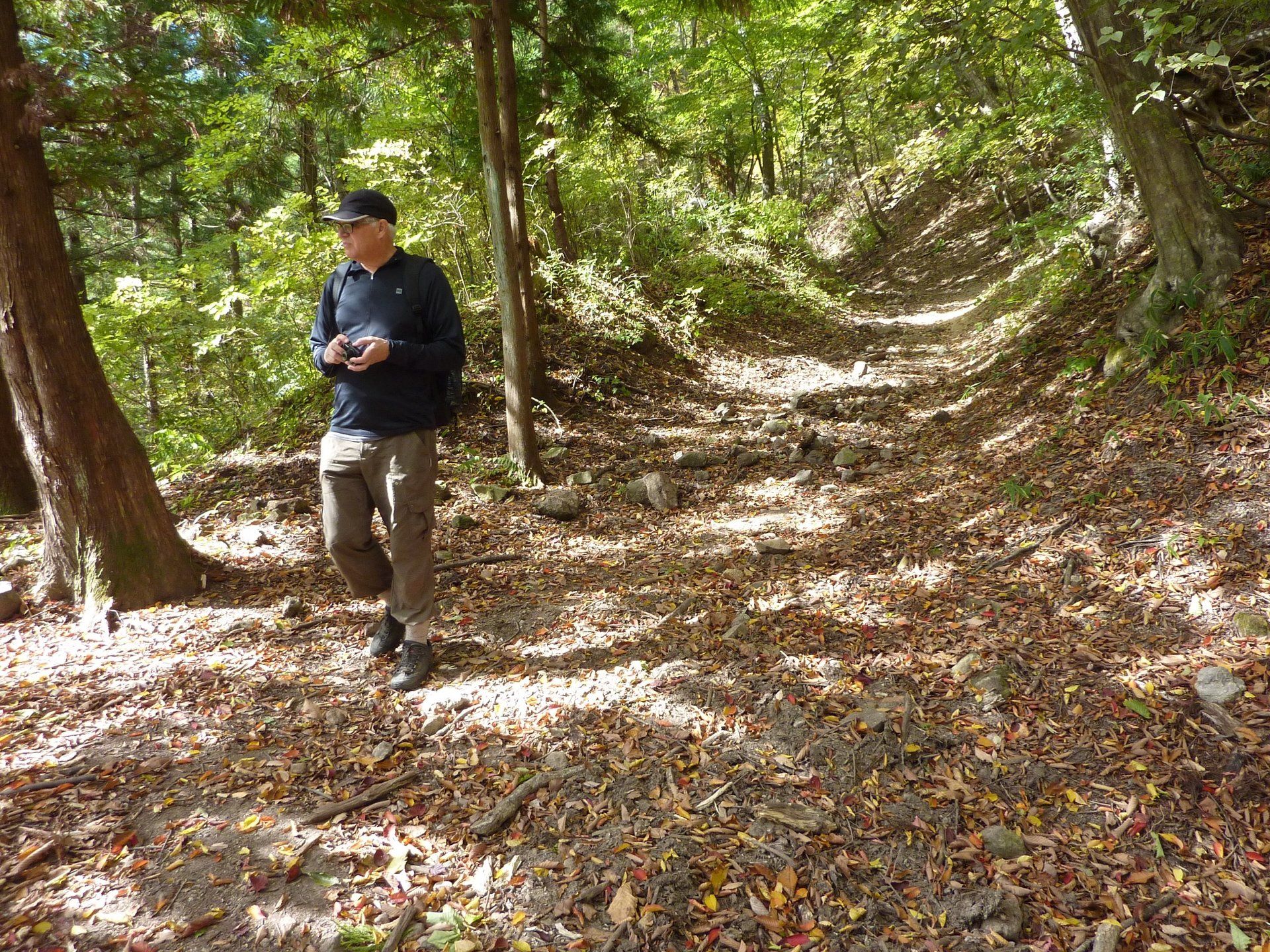
Day 12: Nakasendo Way: Tsumago – Nojiri
This is the longest day on the trail, a beautiful and varied hike. The trail travels through small valleys and past forests of bamboo and Japanese cedar, through some of the least-developed scenery on the tour. At the end of the hike take the train to Kiso-Fukushima where you are met and transferred to your ryokan.
Walking Distance/Time: 18.4km / about 6 hours Elevation Gain: 723m ascent / 644m descent
Overnight: Onsen Ryokan. (B,D)
Alternative Hike: You can choose a shorter hike of 3.7km / 1 hour if you would like to spend the day at the ryokan.
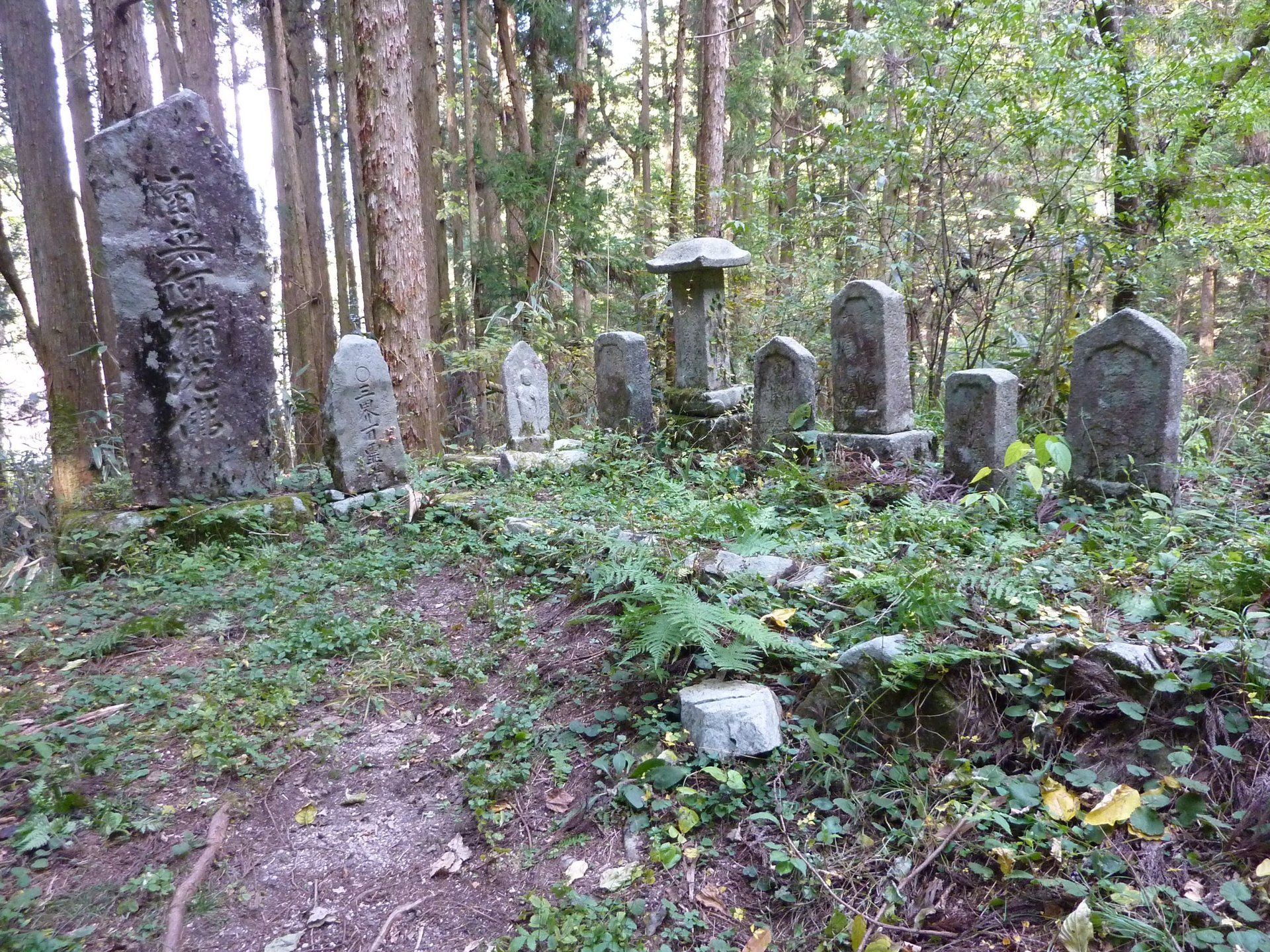
Day 13: Nakasendo Way: Yabuhara – Narai
Return to Kiso-Fukushima train station and travel to Yabuhara, the starting point for the hike over the Torii Pass to Narai. If time permits, explore the atmospheric village of Narai before boarding the train to Tokyo, arriving late afternoon.
Walking Distance/Time: 6.2km / about 3 hours Elevation gain: 344m ascent and 270m descent
Optional Hike: In Kiso-Fukushima there is an optional, fairly strenuous, circular walk to a local waterfall. You can take this walk in the morning, before heading onwards to Yabuhara.
Walking Distance/Time: 7km / about 2-3 hours Elevation Gain: 632m ascent, 637m descent
Overnight Tokyo. (B)

Day 14: Departure
Take the train to the airport for your onward journey
NOTE: We also offer 4-day and 5-day versions of the Nakasendo Way. The 4 day hike visits Magome, Tsumago, Kiso-Fukushima and Narai. The 5 day hike visits Magome, before staying in Tsumago, Kiso-Fukushima and Narai, heading onwards to Karuizawa via the lacquerware town of Kiso-Hirasawa and castle town Matsumoto, before a lovely final night at the Meiji-period inn Tsuruya, before a challenging but excellent hike to Yokokawa on one of the most rural and varied sections of the trail, the five-day trip then ends in Tokyo.

Tour Information
Tour Length: 14 days /13 nights
Departures: Daily
Minimum Number of People: 2 based on Double Occupancy
Timeless Japan Includes:
- 4 nights accommodation, Tokyo
- Full day tour of Tokyo with English-speaking guide.
- 3 nights accommodation Matsue
- Tour of Adachi Art Museum or Izumo Taisha Shrine
- 1 night accommodation Kinosaki Onsen. Includes a 24 hour pass to the onsens.
- 3 nights accommodation Kyoto
- Half-day cycling or walking tour of Kyoto with English-speaking guide
- Breakfast daily
- Nakasendo Way: Train Tickets – Kyoto to trail head, end of the trail to Tokyo, and journeys on the hike, 2 nights at Japanese inns, 2 breakfasts and 2 dinners, detailed day-by-day itinerary and walking directions, topographical maps and local support by phone.
Timeless Japan Doesn’t Include:
- International flight
- Airport transfers
- Travel Insurance
- Pre- or post-tour accommodation
- Meals not included in the itinerary
- Alcoholic and Non-alcoholic beverages
- Nakasendo Way: lunches, drinks, Magome bus and single room supplements if required
- Excursions, activities, and fees not included in the itinerary
- Gratuities to guides and driver
- Personal items
Interested in this Tour?
Traditional and Modern Japan
Day 1: Yokoso Tokyo!
Upon arrival at Tokyo Narita or Haneda International Airport, transfer by airport shuttle service to your hotel. Today will be tailored according to your flight schedule.
Overnight: Tokyo.
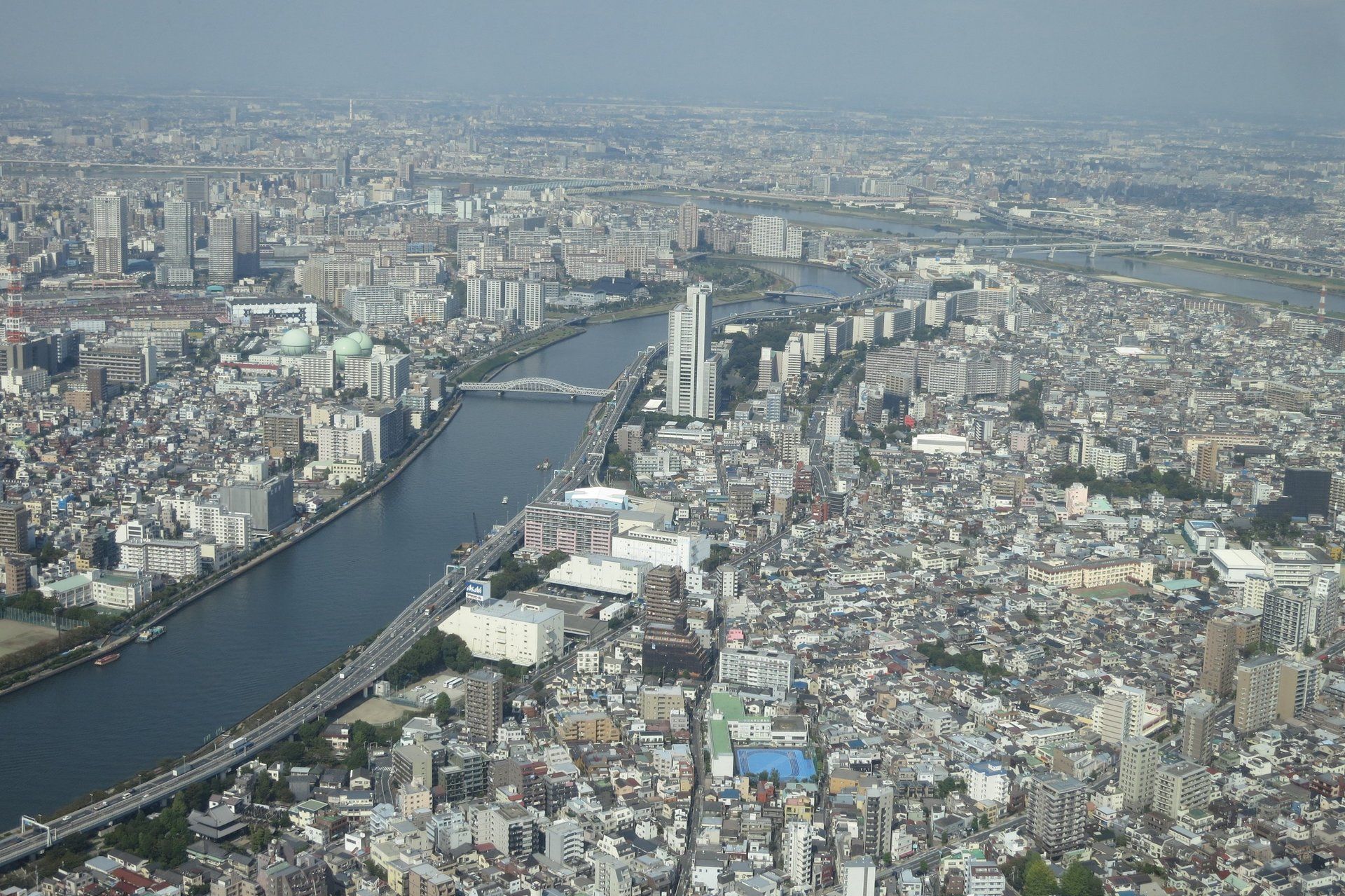
Day 2: Tokyo!
Tokyo is a vibrant dynamic and modern city which has many sides to explore: Sensoji Temple and Mejii Shrine, remnants of the past; the Imperial Palace and Gardens; Akihabara Electric Town; Shibuya, home to the famously busy pedestrian crossing; Tokyo Skytree, the tallest building in Japan and its magnificent views of Tokyo, and on a clear day, Mt. Fuji; Harajuku, a trendy shopping area geared towards fashion conscious teens; futuristic architecture; and absorbing museums and galleries in Ueno Park.
Today is a full day tour of Tokyo based on your interests and what you would like to visit in Tokyo. You may want to catch a training session at a beya, or sumo stable. Or learn how to make sushi with a local chef and enjoy your creation for lunch. Maybe an art or architecture tour is more your style. There are many other options from flower arranging to drumming.
Overnight: Tokyo. (B)
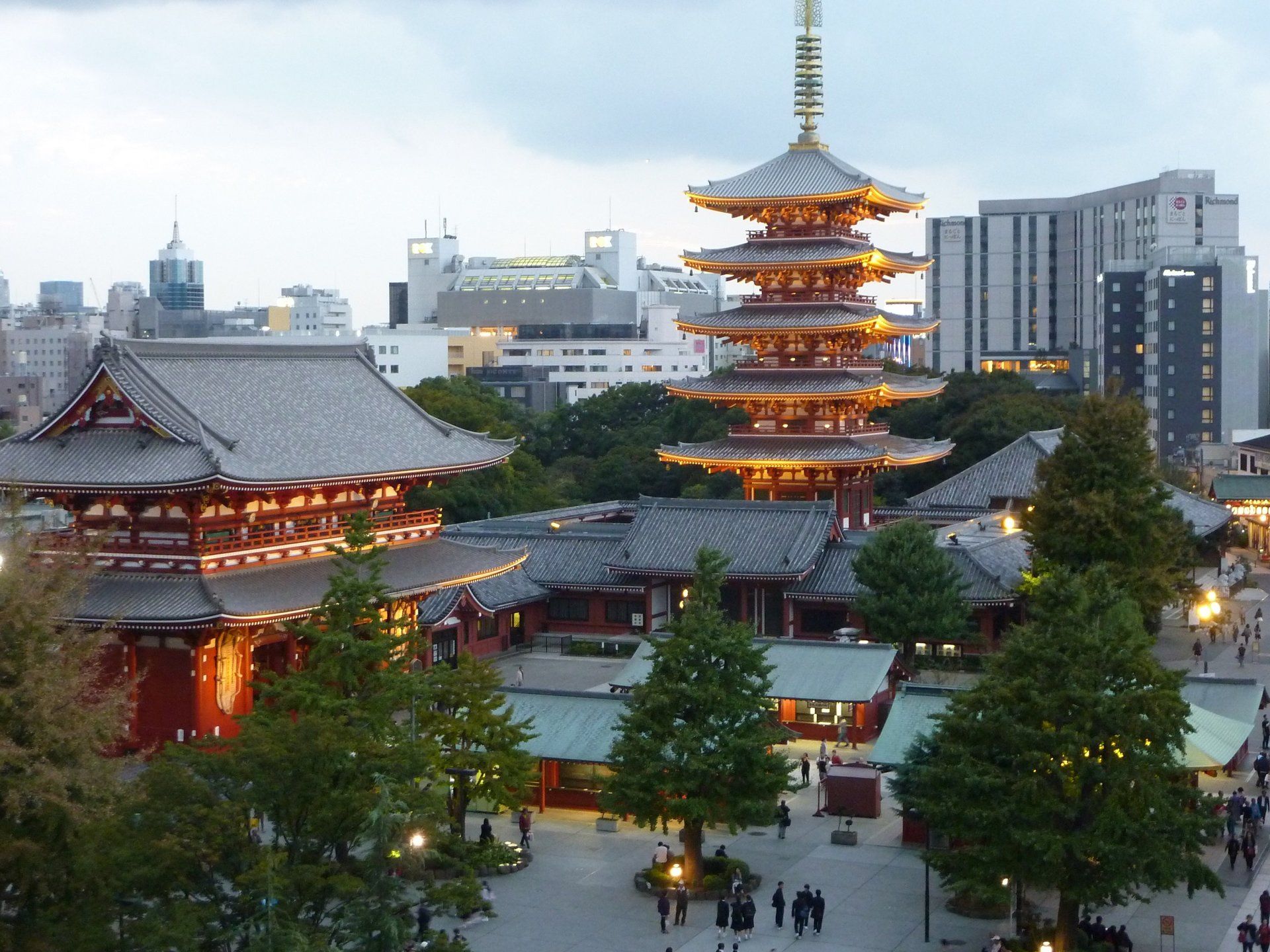
Day 3: Tokyo
A day to explore Tokyo independently or book a tour at an additional cost.
Overnight: Tokyo. (B)
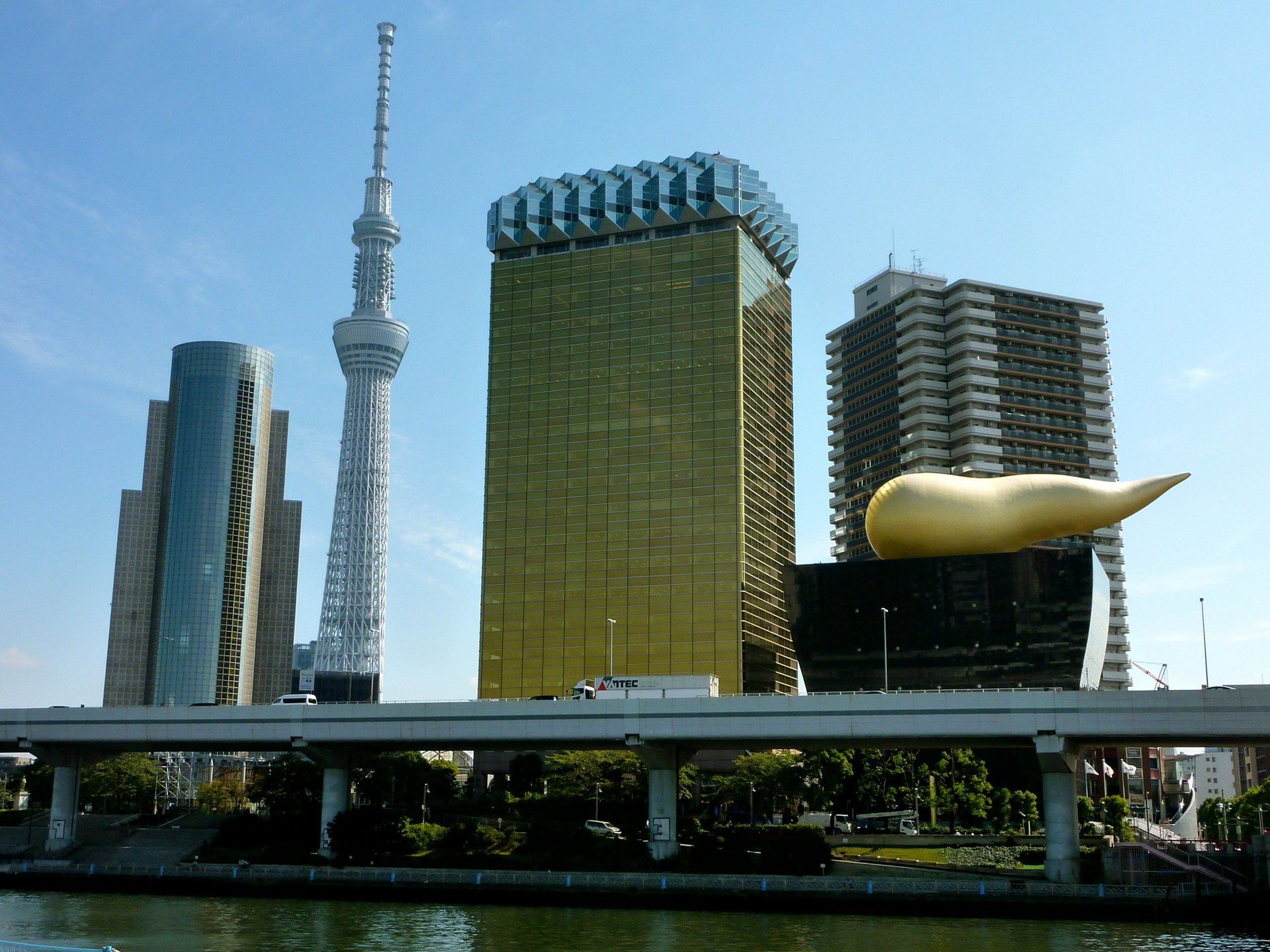
Day 4: Tokyo – Hiroshima
Today take the train from Tokyo to Hiroshima.
Visit the A-Bomb Dome and the Peace Memorial Park and Museum. The A-Bomb Dome, a UNESCO World Heritage Site, was one of the few buildings that remained standing after the bomb was dropped on Aug. 6, 1945. The Peace Memorial Museum reviews Hiroshima’s history, the introduction of the nuclear bomb, the dropping of the bomb and the impact on families. This can be an emotional visit. The A-Bomb Dome and Peace Memorial Park and Museum are symbols of peace and a reminder that we shouldn’t take peace for granted.
Overnight Hiroshima. (B)
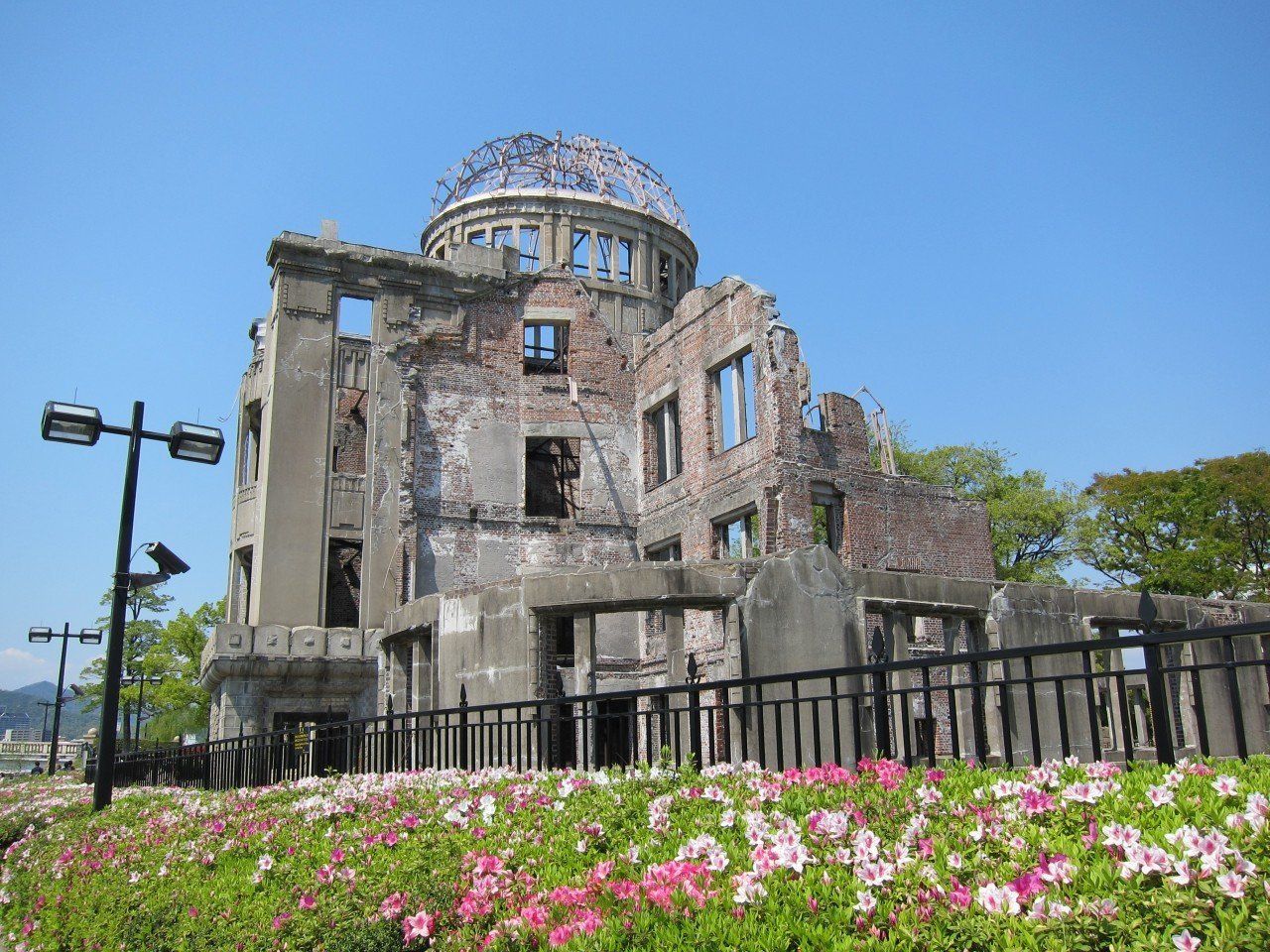
Credit: ©Hiroshima Convention & Visitors Bureau
Day 5: Miyajima Island
Today take the short ferry ride across the Inland Sea to the charming Miyajima Island. It is the home of the honoured Shinto shrine, Itsukushima and its giant bright orange tori (gate) that is considered one of Japan’s three best views.
Miyajima is ideal for walking. One of the most popular hikes is Mount Misen, the highest peak on Miyajima. On clear days there are spectacular views of the Inland Sea. There are several Buddhist temple buildings near Misen’s peak that belong to the Daisho-in Temple located at the base of the mountain. There are several other walks such as the Momijidani ("Maple Valley"), Miyajima's prime leaf viewing area during the autumn.
Overnight Miyajima Island or return to Hiroshima. (B)
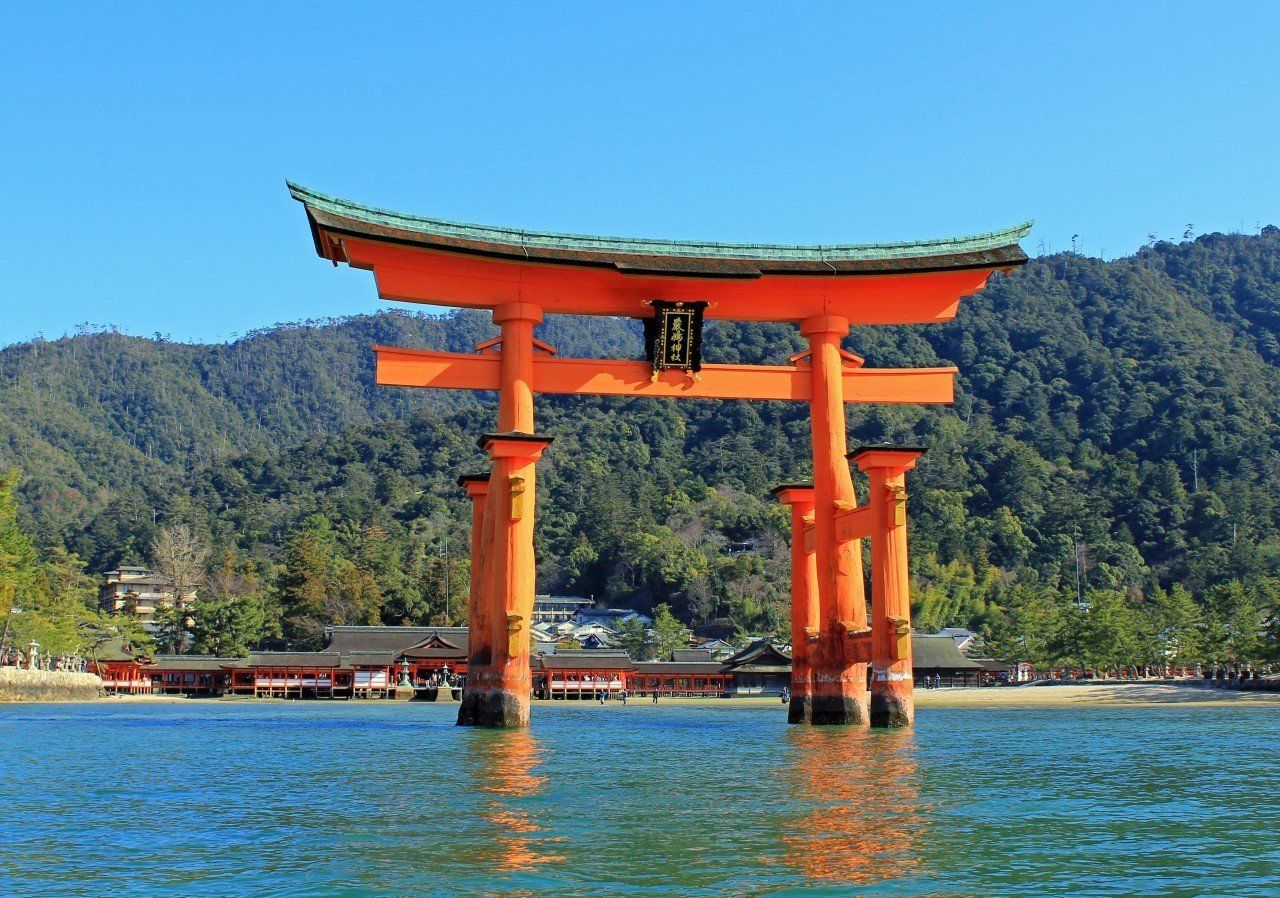
Credit: ©Hiroshima Prefecture / ©JNTO
Day 6: Hiroshirma – Kyoto
Take the train to Kyoto. You will have two full days to explore Kyoto.
Overnight Kyoto. (B)
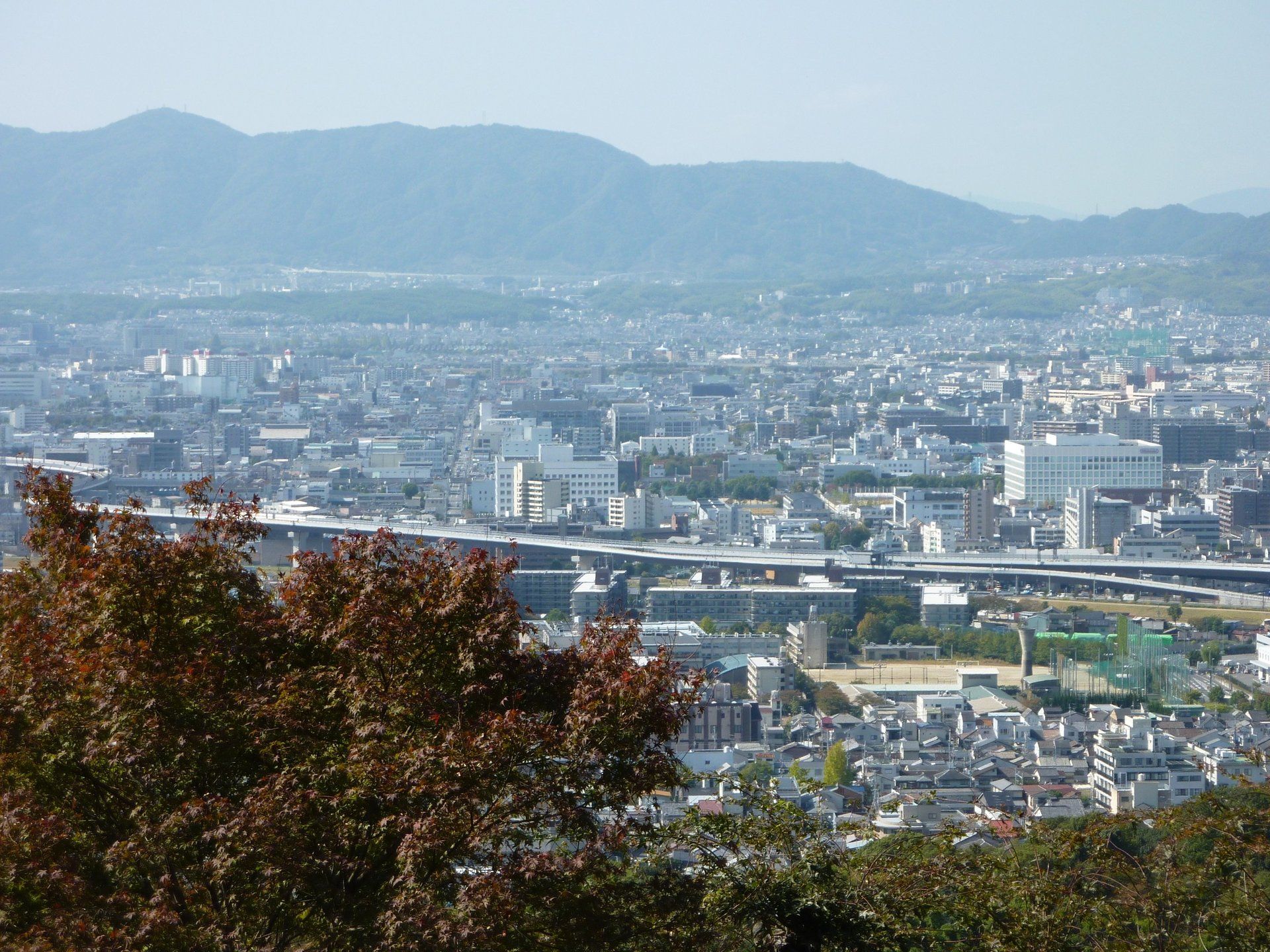
Day 7: Kyoto
A day to explore Kyoto independently. Kyoto is considered the cultural heart of Japan and Kyoto is the best place to experience Japanese culture. There is an abundance of temples, gardens and geisha. Some suggestions include an easy stroll along the ‘Philosopher’s Path’ that connects Ginkaku-ji, the Temple of the Silver Pavilion and Nanzen-ji Temple. Or visit Kinkakuji temple, immortalised in Yukio Mishima’s novel “The Golden Pavilion”. Or visit the Zen garden of Ryoan-ji, celebrated for its complex design of 15 rocks, all of which can’t be seen at once from any angle.
Fushimi Inari Shinto Shrine is famous for its thousands of vermilion torii gates and network of trails through the wooded forest of the sacred Mount Inari. Foxes are thought to be Inari's messengers, resulting in many fox statues across the shrine grounds. This may be the most impressive sight in all of Kyoto.
Overnight Kyoto. (B)
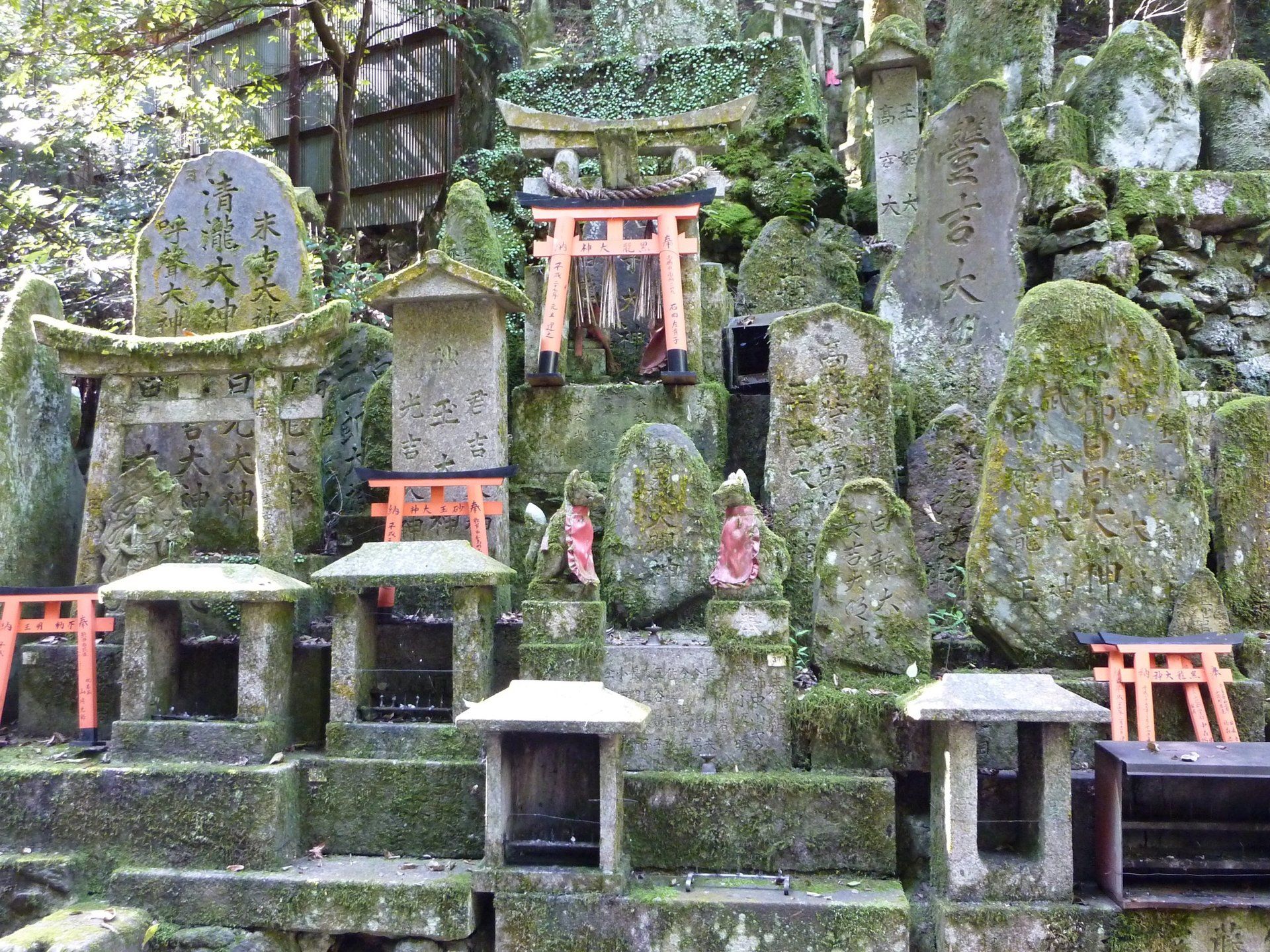
Day 8: Kyoto
Today choose from either a half-day cycling tour or a half-day walking tour:
Cycling Tour: Kyoto’s mainly flat terrain makes cycling a great way to see the city. On this tour you will visit the very popular Kiyomizu Temple and the Yasui Kompira Shrine where locals come here to pray for good relationships or to break off a bad relationship. Cycle picturesque back streets of the Gion district home to geisha and traditional teahouses. Sample Japanese sweets and cycle beside the Takase-gawa River. End your tour at the Nijo Castle, a World Heritage Site and famous for its ‘nightingale flooring’.
Approximate Riding Distance: 15km
Walking Tour: On this walking tour you visit two World Heritage sites, Kiyomizu Temple and the Gion district. Kiyomizu Temple offers visitors a wonderful view of cherry and maple trees from it massive wooden terrace. Stroll along the Shirakawa Canal lined with willow and cherry trees, wander the cobblestone streets of the Gion district lined with traditional machiya merchant house and ochaya (teahouses). Visit the Yasui Kompira Shrine where Kyotoites come to pray for finding a good partner or breaking off from a bad one. This tour ends about 6 p.m. in the Gion district, a great place to spend the evening.
Approximate Walking Distance: 3.5km
Remainder of the day at your leisure.
Overnight Kyoto. (B)
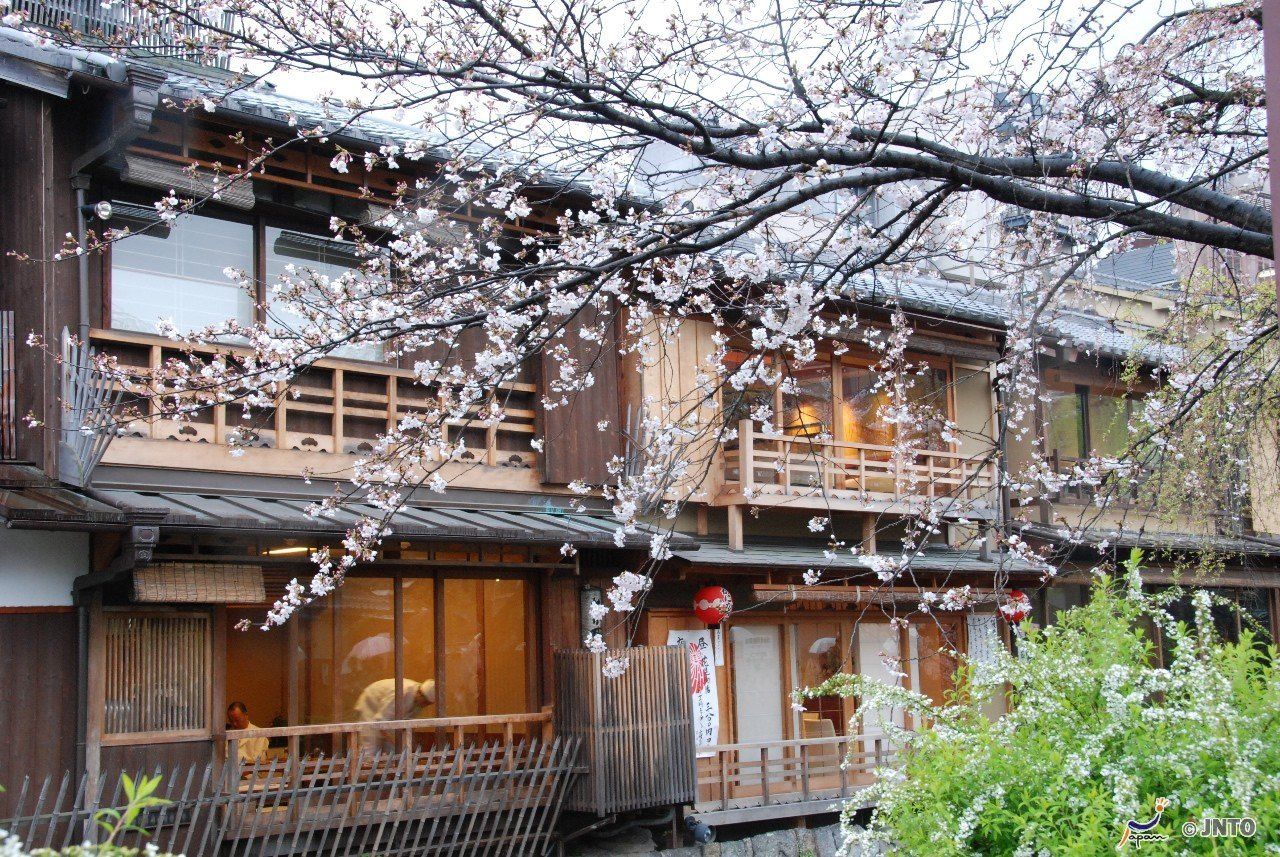
Credit: © Y.Shimizu/© JNTO
Day 9: Nakasendo Way: Kyoto - Tsumago
Today travel by train from Kyoto to Nakatsugawa where you board a bus for a short journey to Magome. Here you begin your self-directed walk along the Nakasendo Way. In feudal times people travelling between Kyoto and Tokyo would use the Nakasendo Way, the road through the central mountains, one of a network of ancient highways. Along the route travellers rested at inns in post-towns.
The walking is mostly paved village paths and unpaved mountains trails, with some gentle ascents and descents. The hike passes through rural scenery and villages, including exquisitely-preserved post-towns
From Magome walk over the pass to Tsumago, one of the best preserved Nakasendo post-towns.
Walking Distance/Time: 8.3km / about 3 hours Elevation Gain: 326m ascent / 430m descent.
Overnight: Minshuku in Tsumago or O-Tsumago. (B,D)

Day 10: Nakasendo Way: Tsumago - Nojiri
This is the longest day on the trail, a beautiful and varied hike. The trail travels through small valleys and past forests of bamboo and Japanese cedar, through some of the least-developed scenery on the tour. At the end of the hike take the train to Kiso-Fukushima where you are met and transferred to your ryokan.
Walking Distance/Time: 18.4km / about 6 hours Elevation Gain: 723m ascent / 644m descent
Overnight: Onsen Ryokan. (B,D)
Alternative Hike: You can choose a shorter hike of 3.7km / 1 hour if you would like to spend the day at the ryokan.
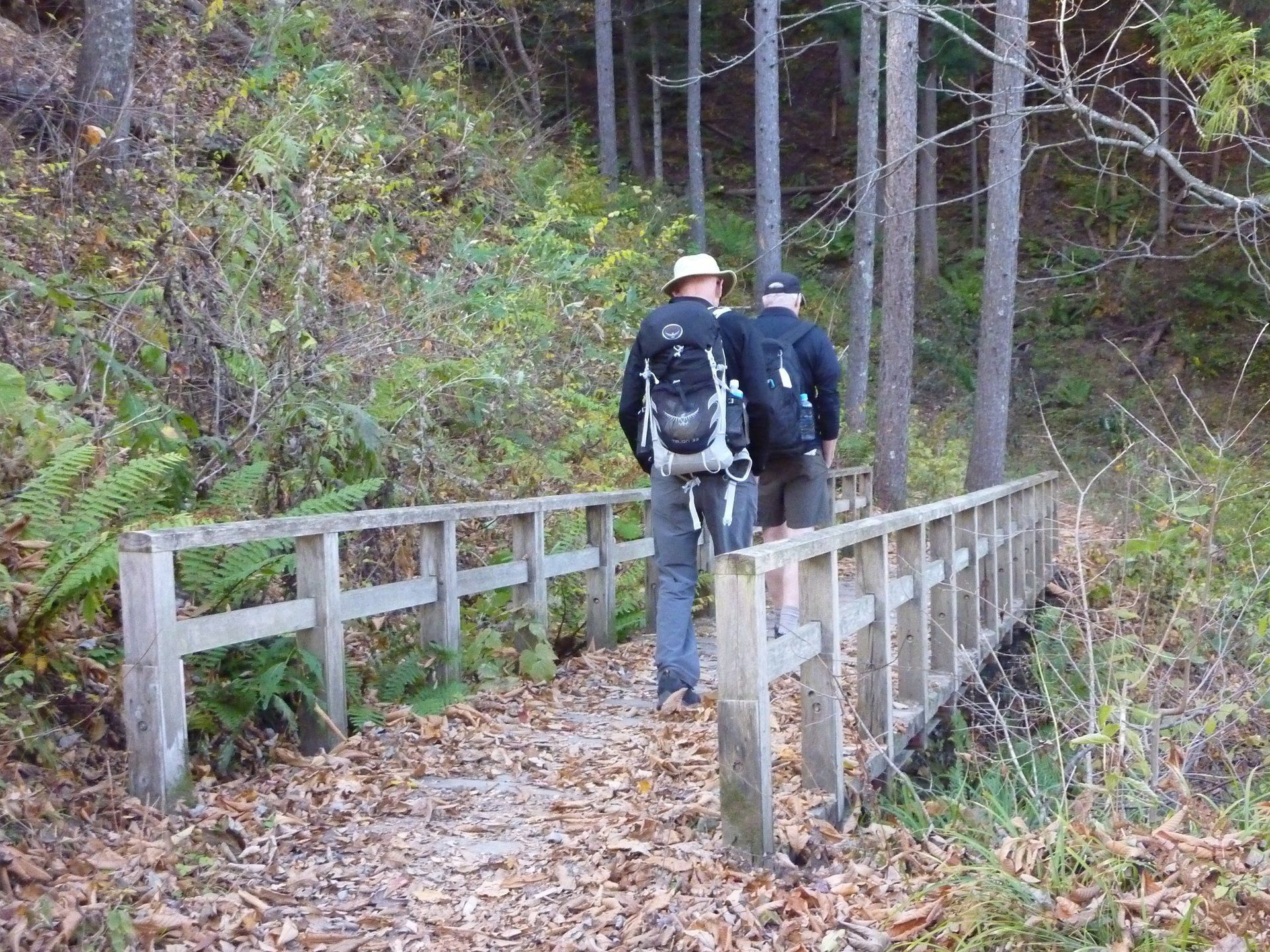
Day 11: Nakasendo Way: Yabuhara - Narai
Return to Kiso-Fukushima train station and travel to Yabuhara, the starting point for the hike over the Torii Pass to Narai. If time permits, explore the atmospheric village of Narai before boarding the train to Tokyo, arriving late afternoon.
Walking Distance/Time: 6.2km / about 3 hours Elevation gain: 344m ascent and 270m descent
Optional Hike: In Kiso-Fukushima there is an optional, fairly strenuous, circular walk to a local waterfall. You can take this walk in the morning, before heading onwards to Yabuhara.
Walking Distance/Time: 7km / about 2-3 hours Elevation Gain: 632m ascent, 637m descent
Overnight Tokyo. (B)
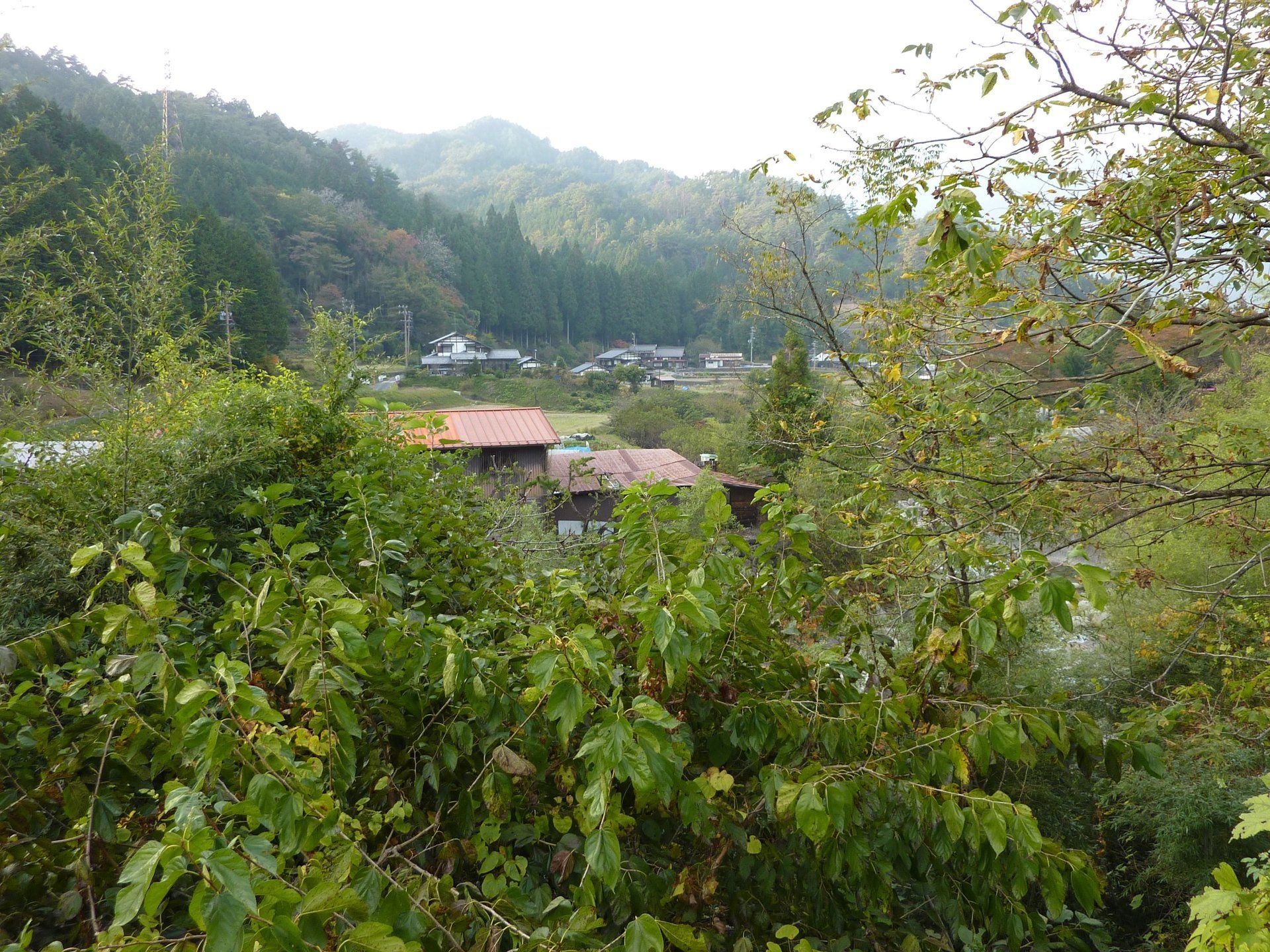
Day 12: Departure
Take the train to the airport for your onward journey.
NOTE: We also offer 4-day and 5-day versions of the Nakasendo Way. The 4 day hike visits Magome, Tsumago, Kiso-Fukushima and Narai. The 5 day hike visits Magome, before staying in Tsumago, Kiso-Fukushima and Narai, heading onwards to Karuizawa via the lacquerware town of Kiso-Hirasawa and castle town Matsumoto, before a lovely final night at the Meiji-period inn Tsuruya, before a challenging but excellent hike to Yokokawa on one of the most rural and varied sections of the trail, the five-day trip then ends in Tokyo.
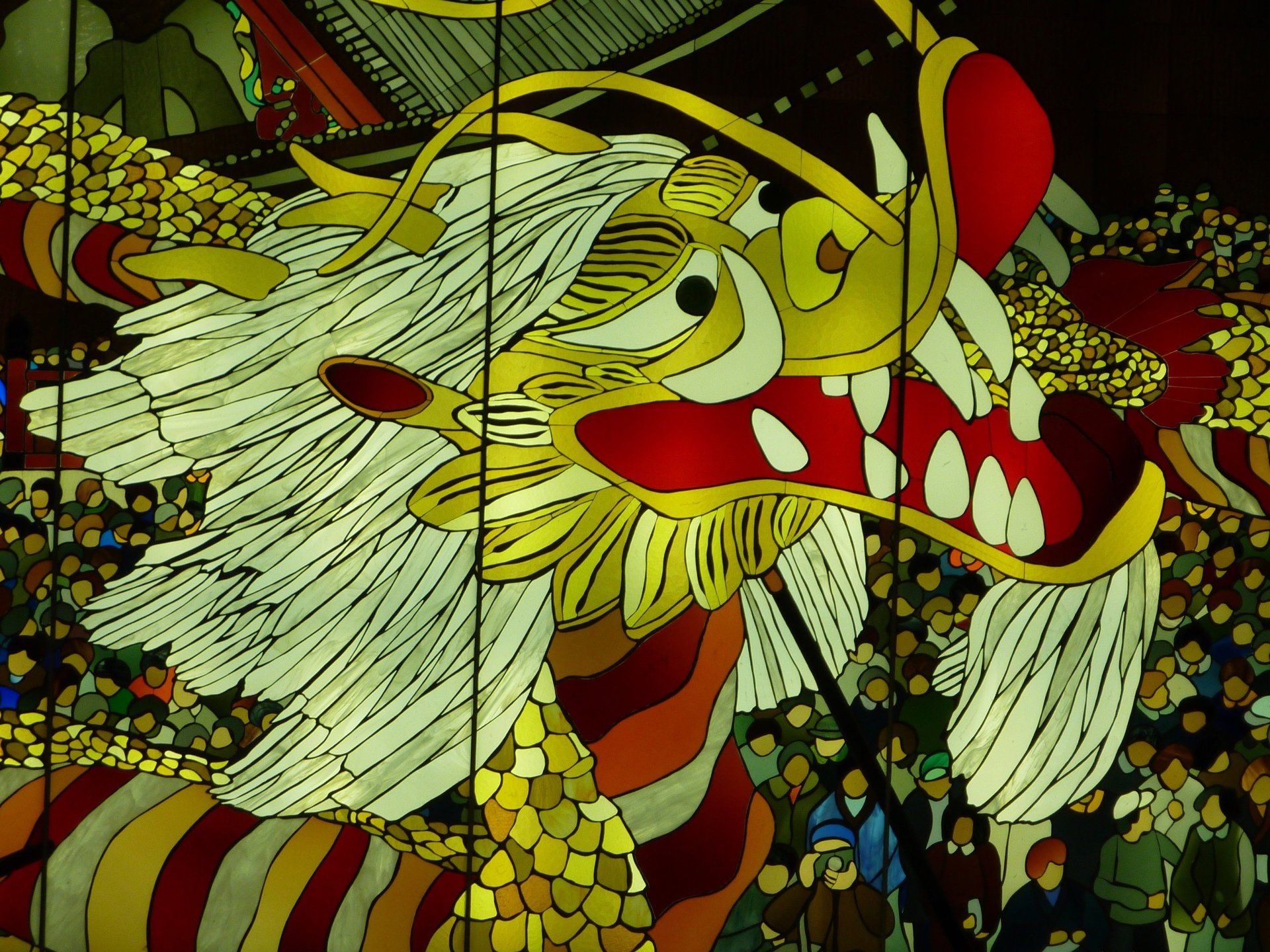
Tour Information
Tour Length: 12 days /11 nights
Departures: Daily
Minimum Number of People: 2 based on Double Occupancy
Traditional and Modern Japan Includes:
- 4 nights accommodation, Tokyo
- Full day tour of Tokyo with English-speaking guide.
- 2 nights accommodation Hiroshima and/or Miyajima
- 3 nights accommodation Kyoto
- Half-day cycling or walking tour of Kyoto with English-speaking guide
- Breakfast daily
- Nakasendo Way: Train Tickets – Kyoto to trail head, end of the trail to Tokyo, and journeys on the hike, 2 nights at Japanese inns, 2 breakfasts and 2 dinners, detailed day-by-day itinerary and walking directions, topographical maps and local support by phone.
Traditional and Modern Japan Doesn’t Include:
- International flight
- Airport transfers
- Train tickets or pass
- Travel Insurance
- Pre- or post-tour accommodation
- Meals not included in the itinerary
- Alcoholic and Non-alcoholic beverages
- Nakasendo Way: lunches, drinks, Magome bus and single room supplements if required.
- Excursions, activities, and entrance fees not included in the itinerary
- Gratuities to guides and driver
- Personal items
Interested in this Tour?
Gardens and Art Tour of
Japan
New Title
New Paragraph
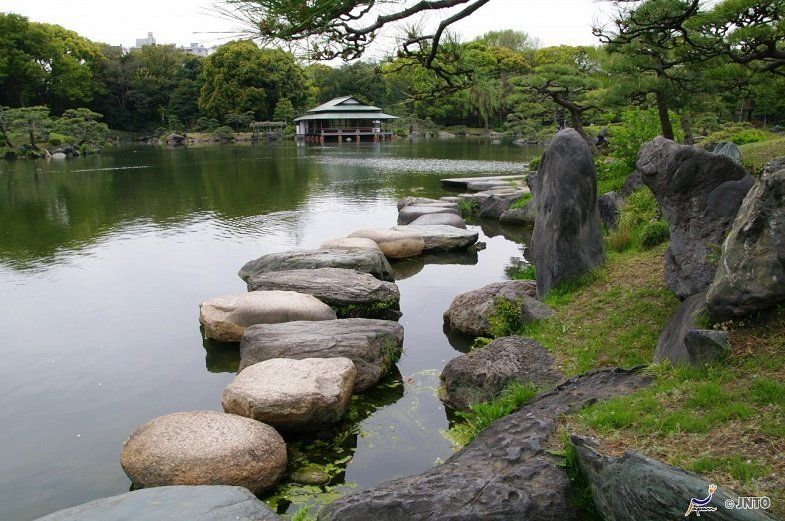
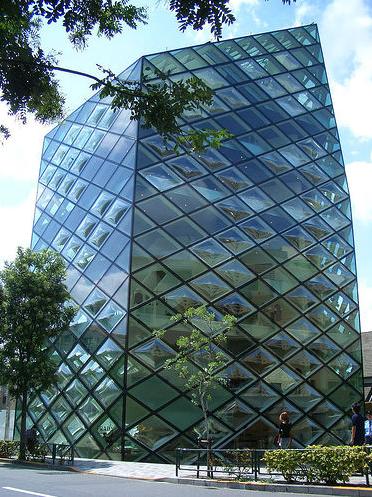
Wednesday, April 11th: Hakone - Matsumoto - Takayama
Today visit the Kubota Itchiku Kimono Museum. Itchiku Kubota revived the lost technique of Tsujigahana, a method used in dying kimonos in the 14tto 16th centuries. This technique is known for its beauty and high quality. There are majestic views of Mt. Fuji and Lake Kawaguchi from the museum.
En-route to Takayama visit Matsumoto Castle, one of Japan’s original and most beautiful castles and a wasabi farm.
Takayama’s old town has been beautifully preserved with many buildings and whole streets of houses dating from the Edo Period when the city thrived as a wealthy town of merchants. Stroll through the streets before a sake tasting at a local brewery. Overnight Takayama. B
En-route to Takayama visit Matsumoto Castle, one of Japan’s original and most beautiful castles and a wasabi farm.
Takayama’s old town has been beautifully preserved with many buildings and whole streets of houses dating from the Edo Period when the city thrived as a wealthy town of merchants. Stroll through the streets before a sake tasting at a local brewery. Overnight Takayama. B
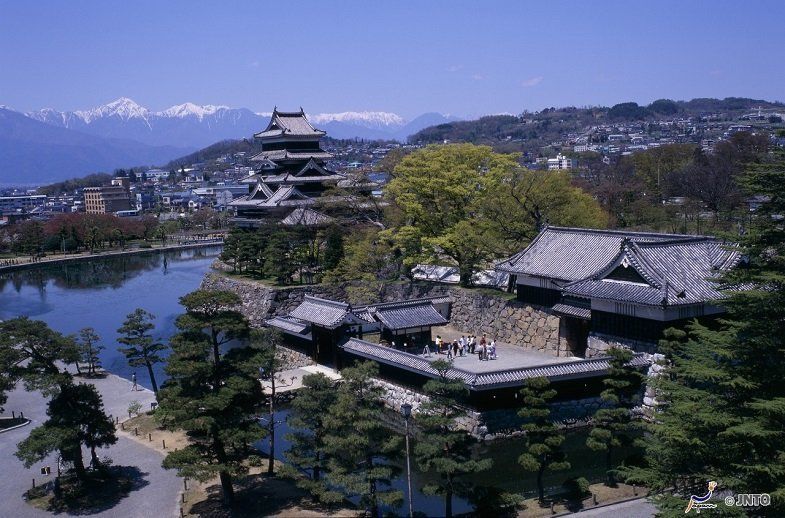
Thursday, April 12th: Takayama, Shirakawago, Kanazawa
Wander through the Takayama Morning Market and Takayama Float Exhibition Hall which houses four
resplendent floats, each decorated with intricate weavings and carvings displayed in the spring and autumn festivals.
Continue to the village of Shirakawago, a UNESCO World Heritage site and home to several well preserved gassho-zukuri farmhouses, some of which are more than 250 years old. Visit Wada House and the Nagase House.
In Kanazawa tour the Nagamachi district, a well-preserved
Samurai district. Today the area looks much the same as it did in the Edo era, with canals and cobbled streets that run between earthen tile-topped walls. Nomura Samurai House is one of the chief attractions in this district. Overnight Kanazawa. B
resplendent floats, each decorated with intricate weavings and carvings displayed in the spring and autumn festivals.
Continue to the village of Shirakawago, a UNESCO World Heritage site and home to several well preserved gassho-zukuri farmhouses, some of which are more than 250 years old. Visit Wada House and the Nagase House.
In Kanazawa tour the Nagamachi district, a well-preserved
Samurai district. Today the area looks much the same as it did in the Edo era, with canals and cobbled streets that run between earthen tile-topped walls. Nomura Samurai House is one of the chief attractions in this district. Overnight Kanazawa. B
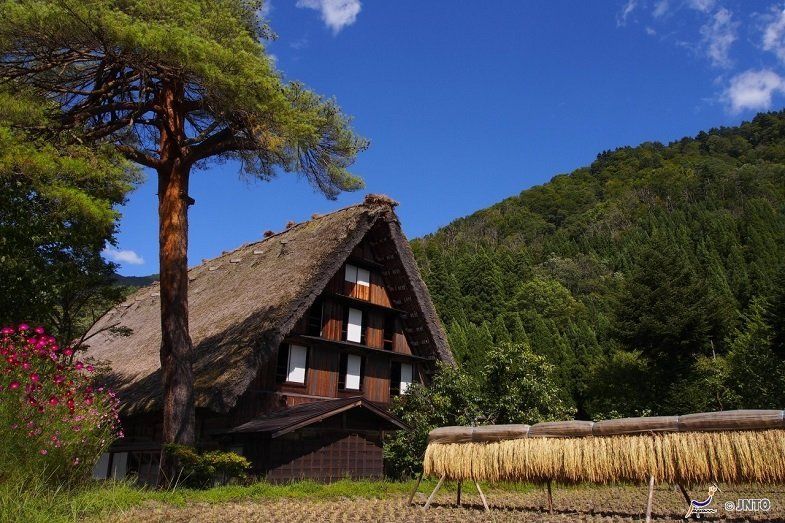
Friday, April 13th: Kanazawa - Kyoto
An early visit to one of Japan’s three most beautiful gardens, the Kenrokuen Garden. It combines the six attributes of a perfect garden: spaciousness, seclusion, artificiality, antiquity, abundant water and broad views. In Kyoto stop at the private garden of Murin-an Villa and Nanzenji Zen Temple.
If time permits the group has a choice to visit Heian Shrine and Garden or the Kyoto Handicraft Museum.
Heian-jingu Shrine is famous for its garden, especially when the cherry trees are in bloom. Kyoto Handicraft Museum sells traditional arts and crafts work such as pottery, dolls, folding fans, lacquer ware, kimonos and many others. Overnight Kyoto. B
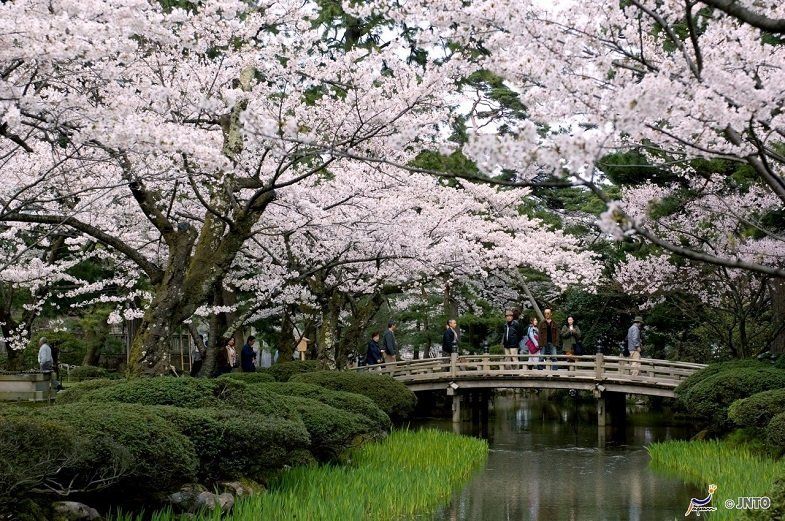
Saturday, April 14th: Kyoto Temples, Gardens and Artists
Begin the day with visits to Ryoanji Temple and Kinkakuji Temple. Ryoanji Temple, a UNESCO World Heritage site, is prominent for its mysterious Zen stone garden. Kinkakuji Temple is a World Cultural Heritage site with a sparkling golden pavilion and a pond-centred garden. In the afternoon learn from artists how washi, a traditional paper, is made and how the colour “Japan Blue” or indigo is produced. Overnight Kyoto. B
Recommended Independent Visit: Kyoto Botanical Garden for the light-up of about 110 weeping cherry blossoms.
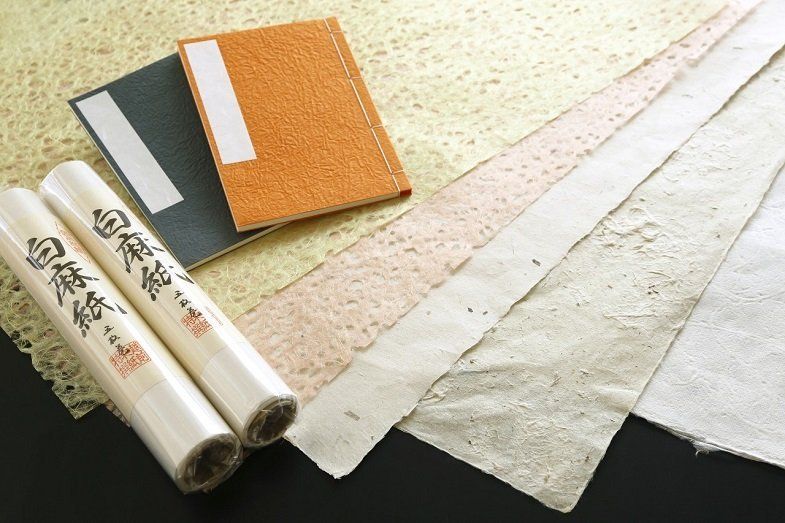
Sunday, April 15th: Kyoto - A Day of Zen Gardens
At the superb Kurodani Konkai Komyoji temple complex, rarely visited by tourists, listen to an expert on Japanese garden design and maintenance.
Enter the temple, Honen-in, through a moss-covered gate and pass between two sand mounds that are said to purify the visitor into this tranquil garden. The main hall itself is only open from April 1-17 when the camellias are in bloom.
The Philosopher’s Path follows a canal lined with hundreds of cherry trees which are an explosion of colour in April. Several temples line this walk including Ginkakuji or the Silver Pavilion,
Subject to permission, we visit Saiho-ji Temple, a must-see. The grounds of the temple complex form a lush carpet of about 120 varieties of moss. To enter the garden visitors must participate in the Buddhist practice of copying sutras called shakyo. This isn’t as difficult as it sounds!
If time permits visit Tenryu-ji Temple with its Zen garden that dates to the 14th century. The garden features a large pond reflecting the surrounding trees and rocks and makes use of “borrowed scenery” of the background Arashiyama hills.
Overnight Kyoto. B

Monday, April 16th: Kyoto - Gardens and Sake
This morning our destination is the large Zen temple complex, Daitokuji consisting of 22 subtemples. Ryogen-in Temple is the oldest meditation hall in Japan and has the smallest rock garden. There are several gardens, each with an individual symbolic meaning. Koto-in Temple is known for its beautiful entryway through a bamboo forest and gardens. Daisen-in Temple’s stone garden is famous and one of the best examples of its kind.
In the afternoon take an aroma and food tour that includes a sake shop and light lunch with tasting, incense ceremony and a soy sauce producer. Overnight Kyoto. BL
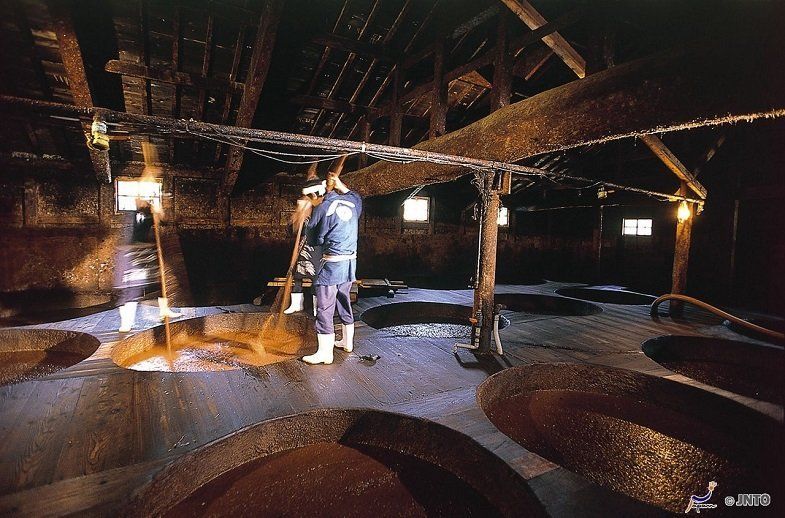
Tuesday, April 17th: Kyoto - Takamatsu
Awaji Yumebutai consists of a conference center, a hotel, a greenhouse, gardens, and a memorial in the city of Awaji located in an island of the same name. The complex was designed by architect Tadao Ando and built on the side of a mountain. One of the most amazing features is the Hyakudanen or “the 100 Stepped Garden, a group of 100 flower beds in small square gardens and arranged in grids that are spread over several levels. Kiseki no Hoshi Botanical Garden is housed in a greenhouse that exhibits
plants under the concepts of "Feeling Plants with Five Senses" and "Coexistence" proposing a greener urban lifestyle. Continue to Honpuku Temple (water temple) also designed by Tadao Ando
Ritsurin Garden in Takamatsu was built during the Edo Period and said to have taken 100 years to complete. The south garden is designed in Japanese style and the north garden is western style. The gardens contain many ponds, tsukiyama, and historic trees and set against the backdrop of Mt. Shiun. Overnight Takamatsu. B

Wednesday, April 18th: Takamatsu - Naoshima, The Art Island - Okayama
In the morning visit a bonsai nursery before taking a ferry to the art island of Naoshima known for its modern art museums, architecture and sculptures. Abandoned houses have been transformed into art installations, museums are built underground and artwork from Claude Monet to James Turrell is displayed. From Naoshima, transfer to Miyanoura Port and take the ferry to Uno Port. Continue to Okayama for the night. B
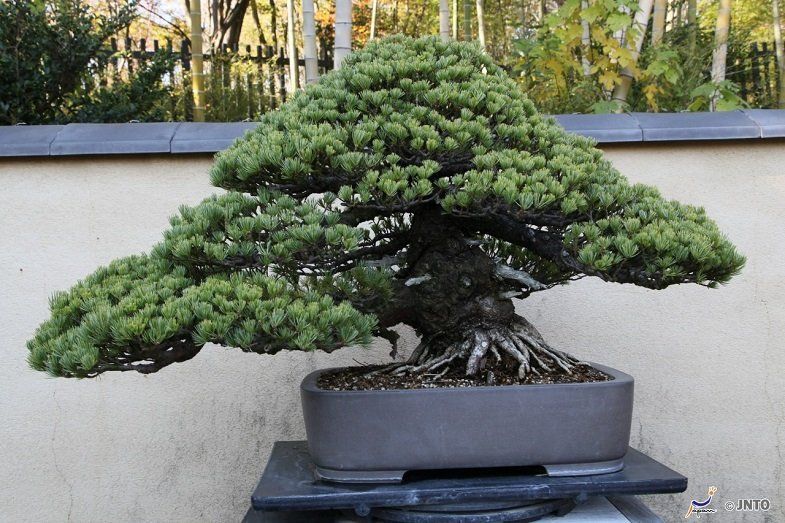
Thursday, April 19th: Okayama - Kirishiki - Tokyo
Enjoy your last garden visit to Korakuen Garden, considered one of the three best gardens in Japan. Continue to Kurashiki with its beautifully preserved historic area and canal. Kurashiki is roughly translated as “town of storehouses” which refers to the storehouses where rice was once kept. Today these former storehouses have been converted into museums and cafes. Stroll along the weeping willow lined canal banks, visit the Ohara Museum or Ohashi House if time permits. Return to Okayama and board the bullet train to Tokyo. BD
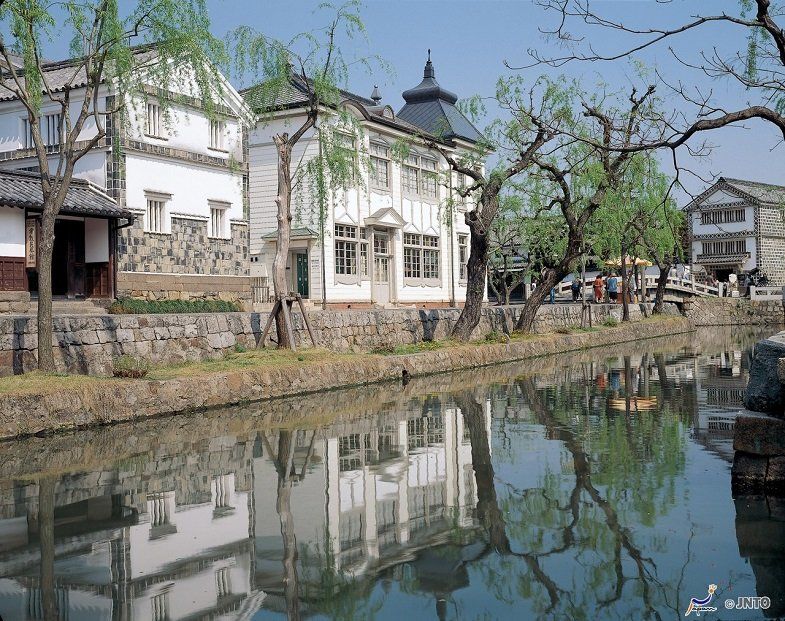
Friday, April 20th: Departure
Transfer by coach to Narita airport. B
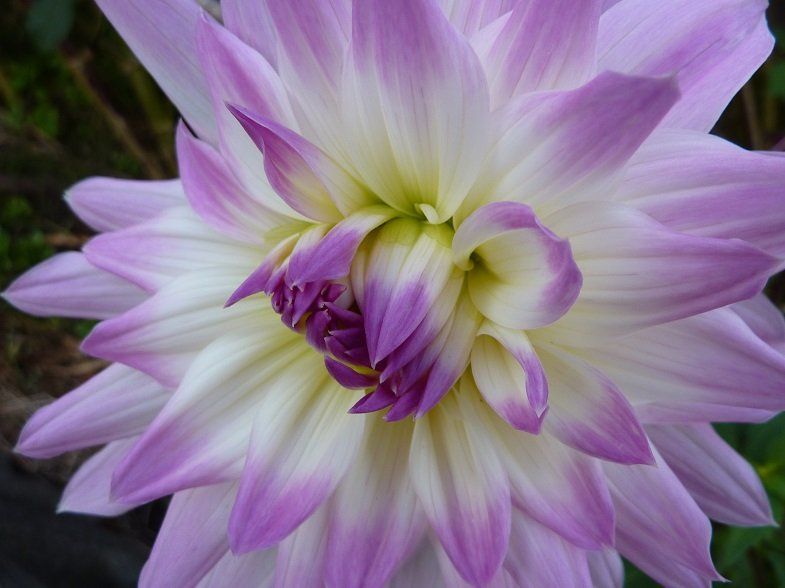
Tour Information
Tour Length:
13 days / 12 nights
Date: April 8 – 20, 2018
Land Price: $7680CAD per person. This price is based on a minimum of 15 participants and double occupancy.
Single Supplement: $1320CAD
Prices quoted are effective as of September 2017. The final price although not expected to change, may be modified if the minimum number of people (15 people) is not met.
Gardens and Art of Japan Includes:
- Transportation by motorcoach including driver’s gratuity
- One-way bullet train Okayama-Tokyo
- 12 nights accommodation
- 12 breakfast, 1 lunch and 3 dinners
- Visits and activities per itinerary
- Entrance fees for visits and activities per itinerary
- English-speaking guide
- Porterage of 1 piece of luggage
Gardens and Art of Japan Doesn’t Include:
- International Airfare
- Travel Insurance
- Accommodation not included in the itinerary
- Meals not included in the itinerary
- Alcoholic and non-alcoholic drinks
- Excursions, activities, and entrance fees not included in the itinerary
- Gratuities to guides
- Personal Items
Our Tour Host

Katherine Ylitalo is a garden historian, horticulturalist, writer, curator and educator based in Calgary with a special interest in the point where art and gardens and horticulture converge. She is involved in the stewardship of the MacDonald Butterfly Garden at the Banff Centre and teaches Contemporary Art and Gardens at the University of Calgary.

